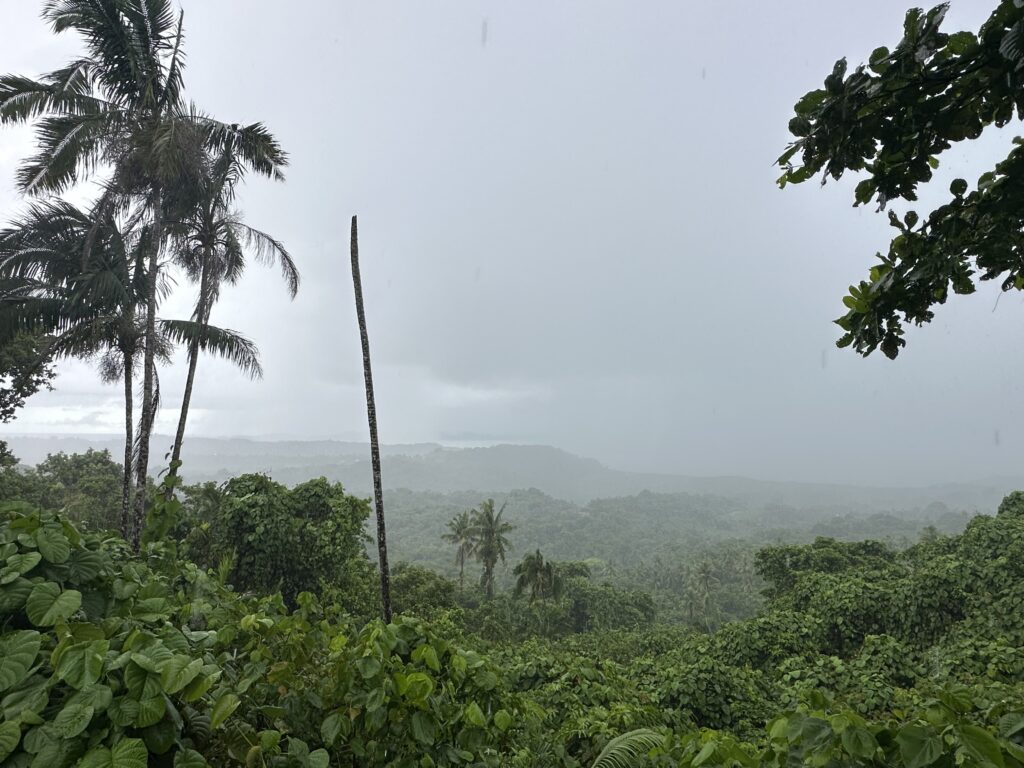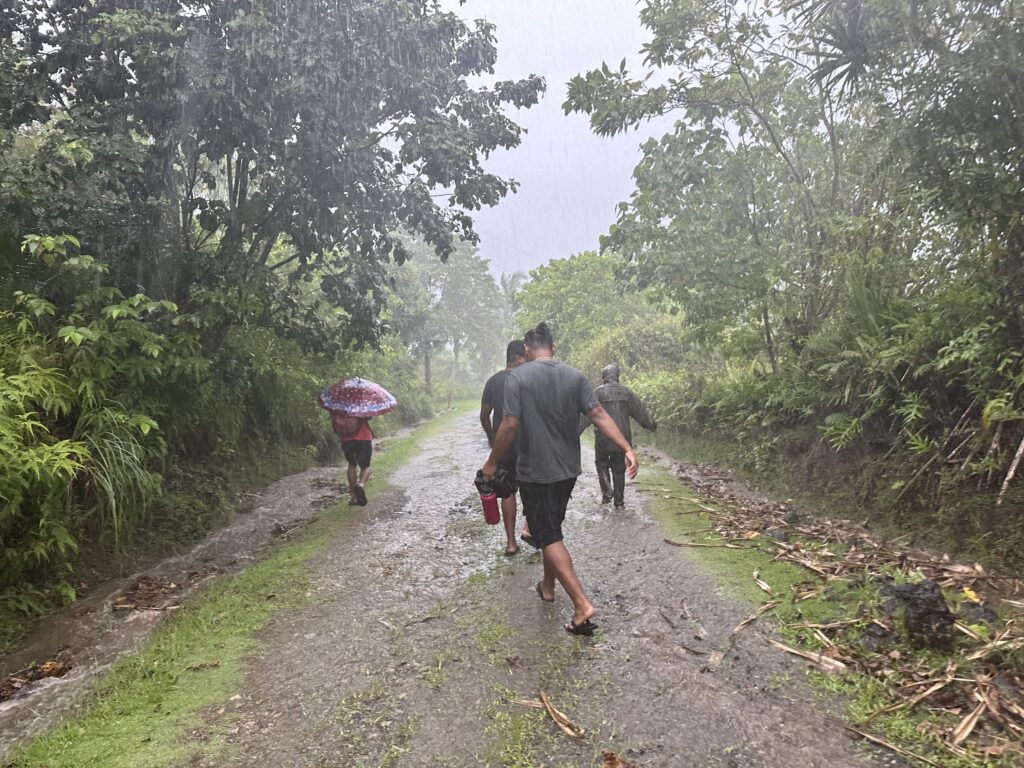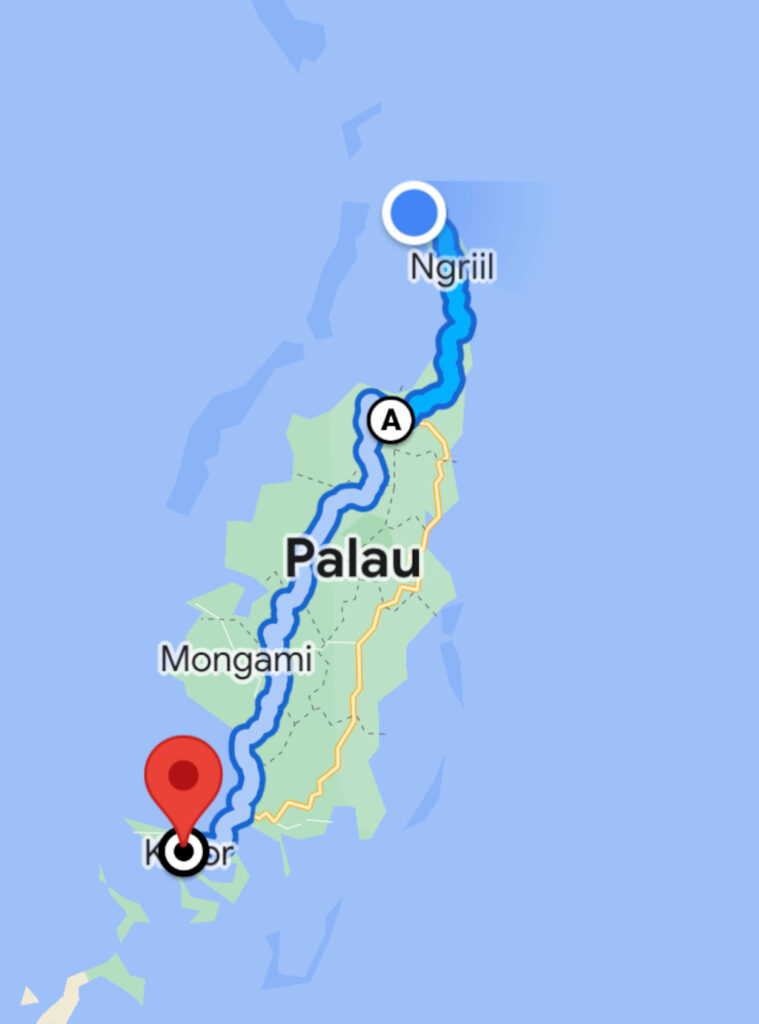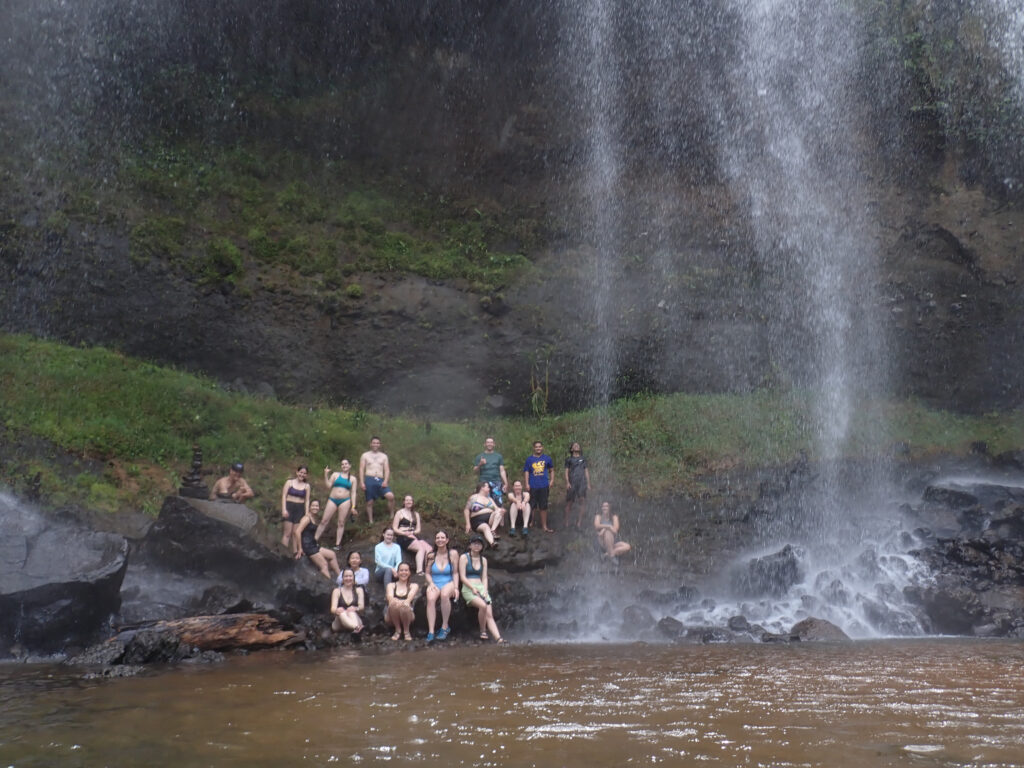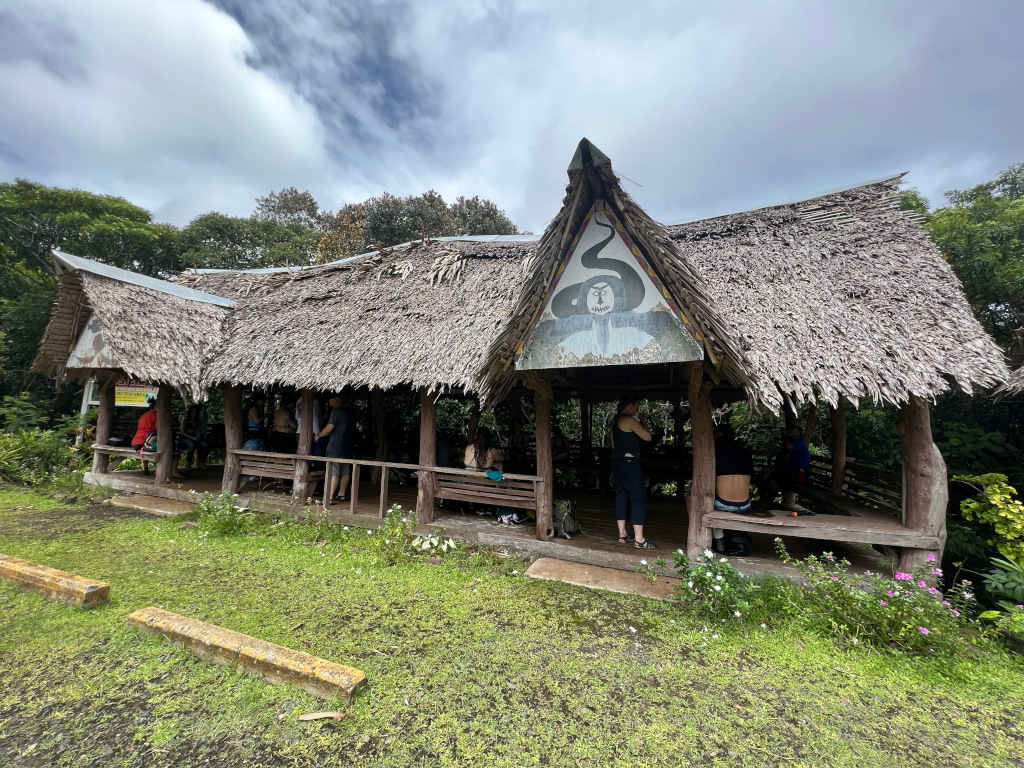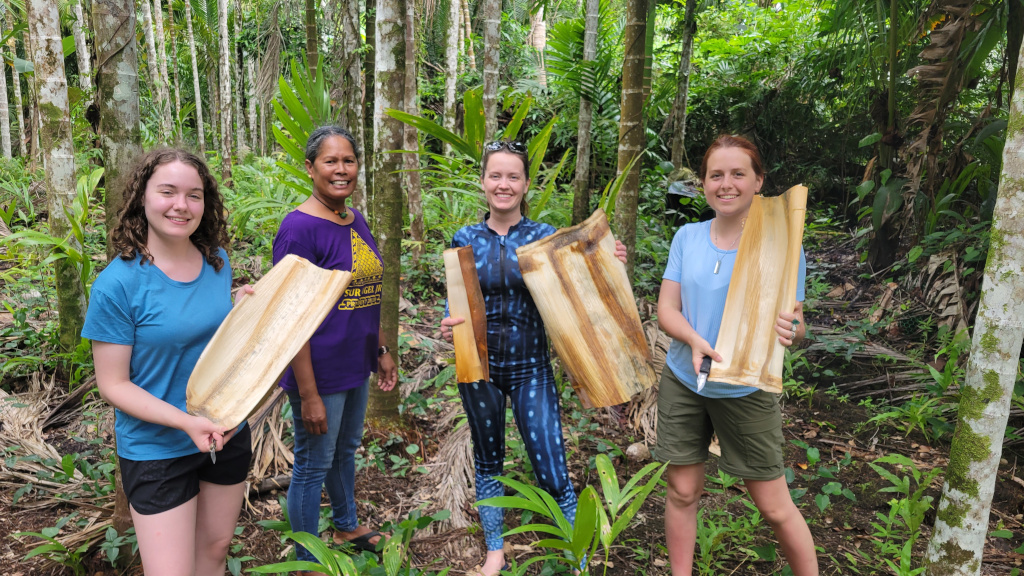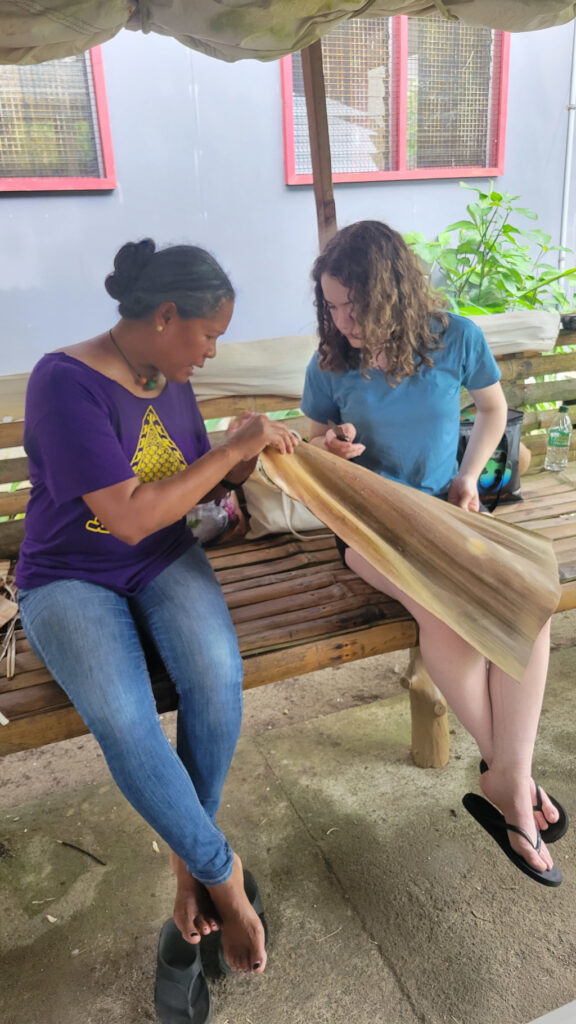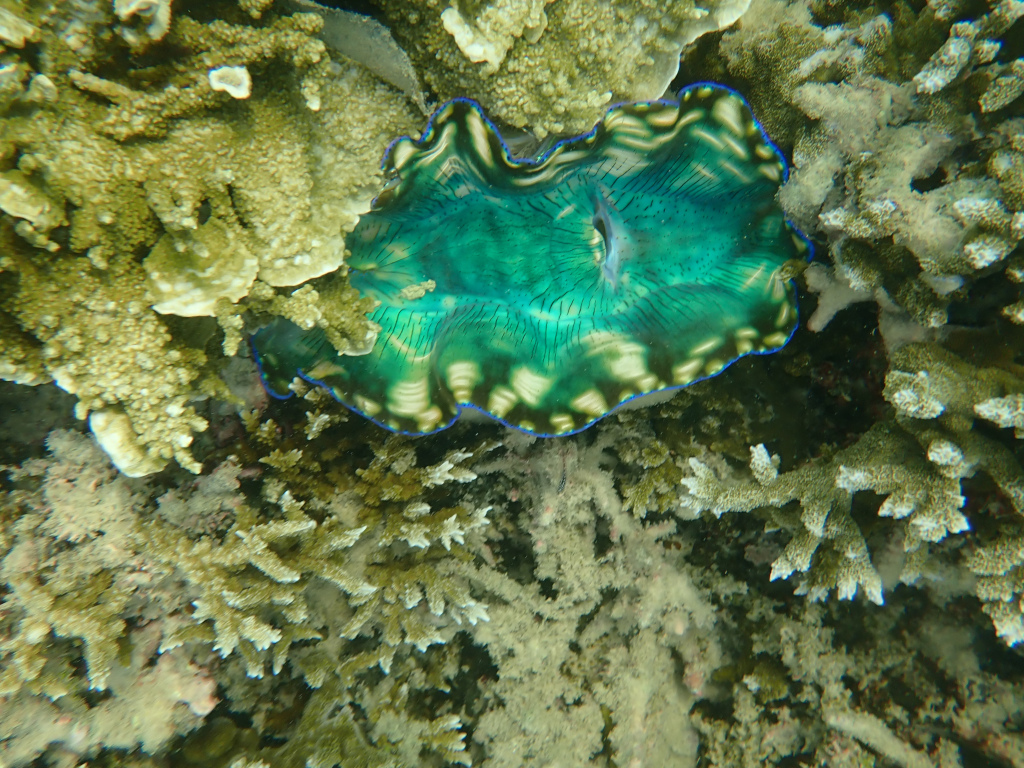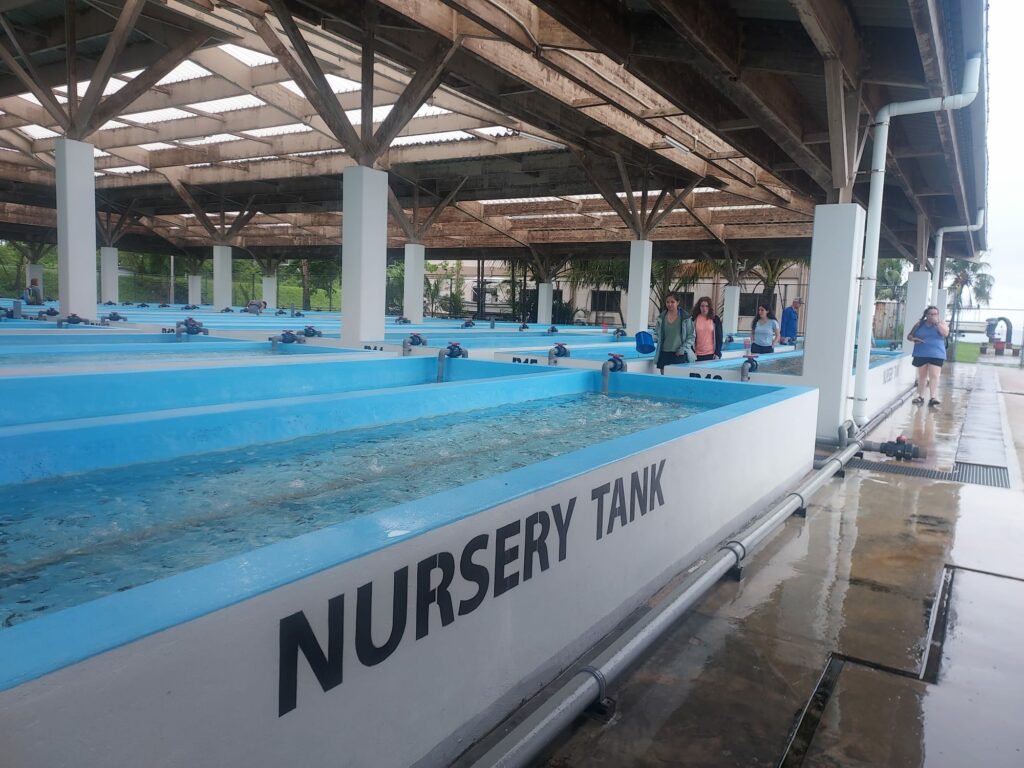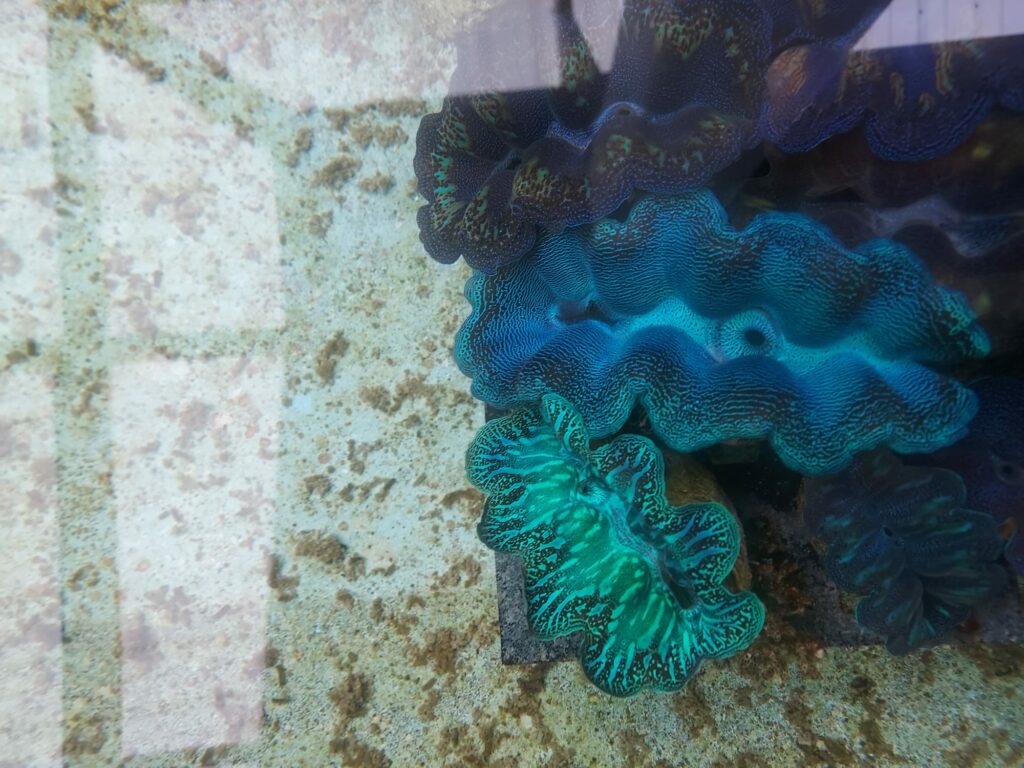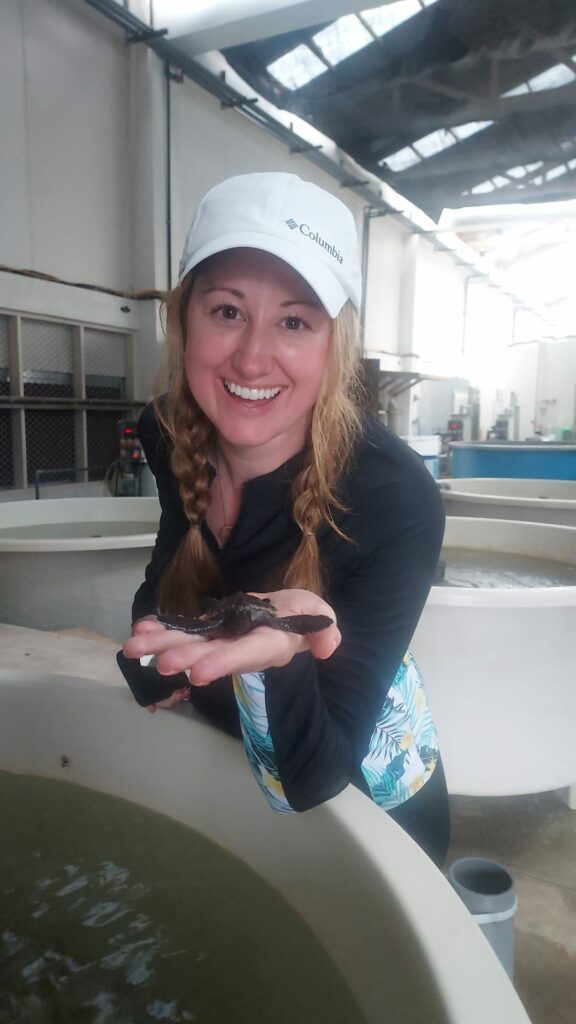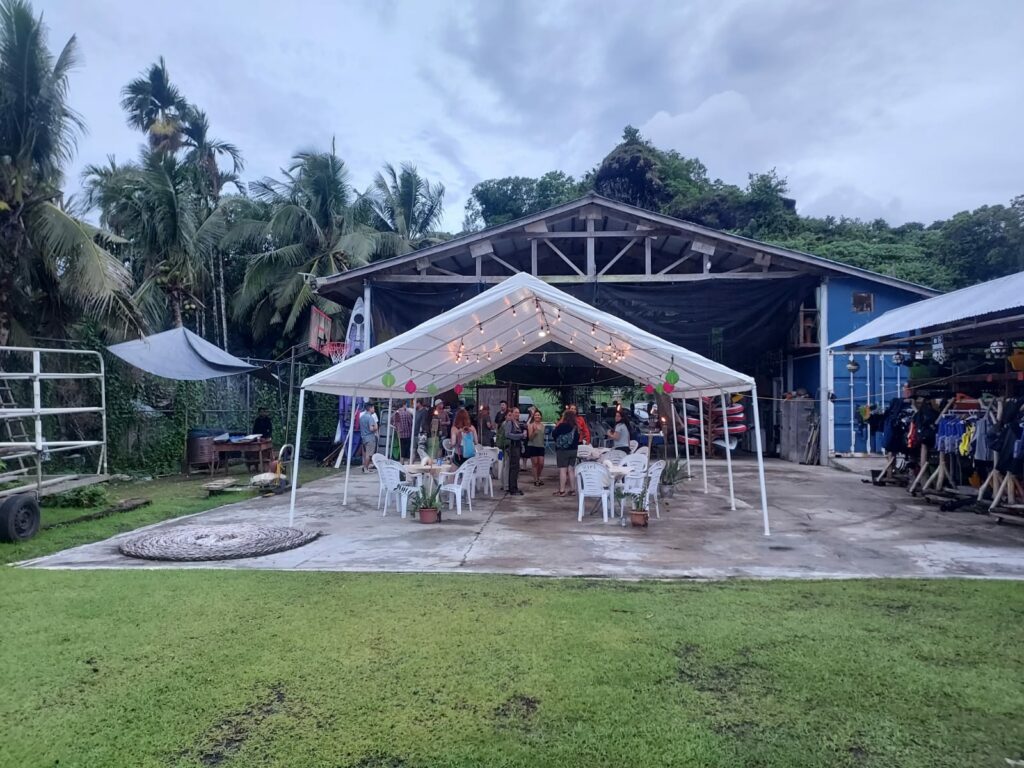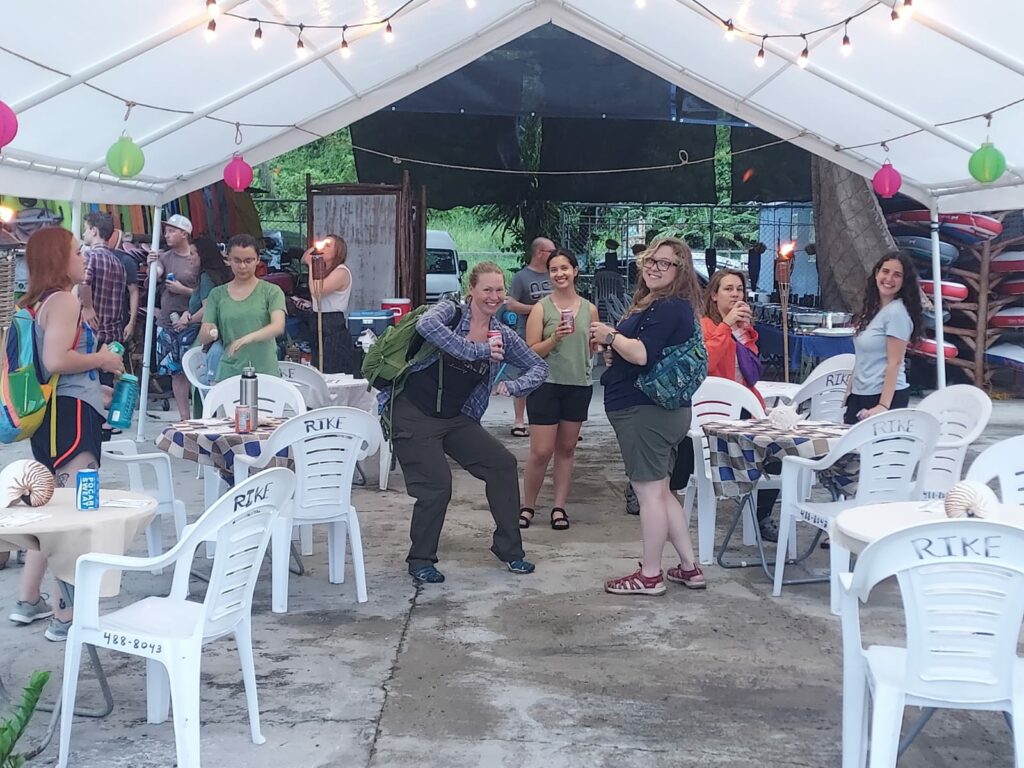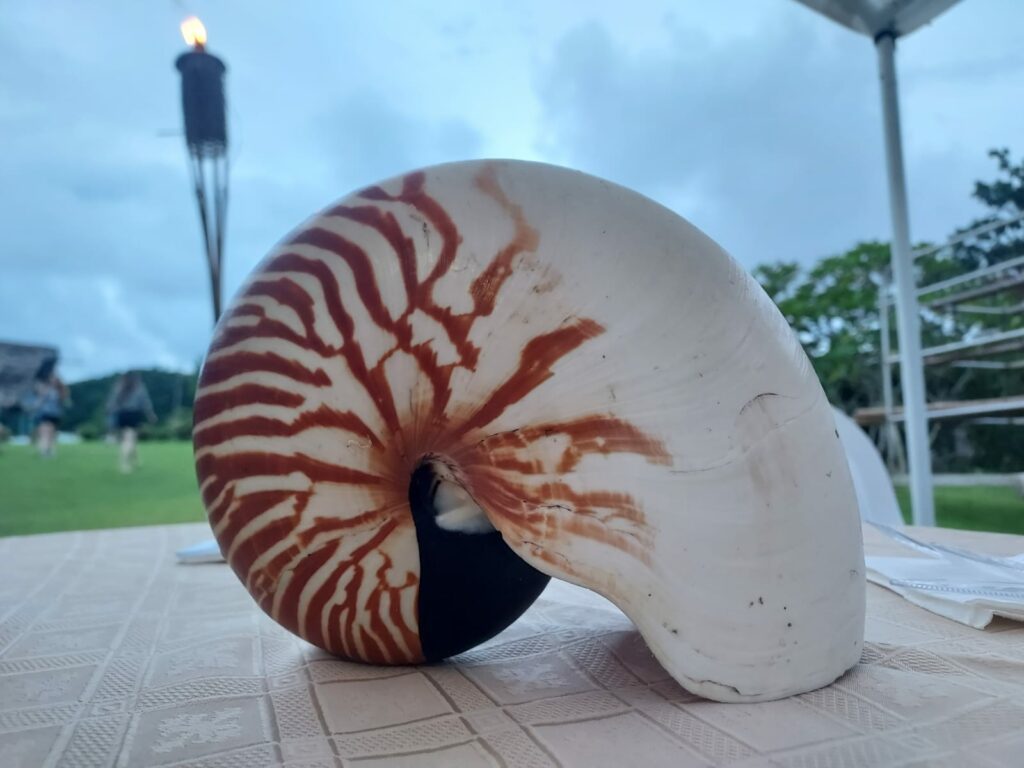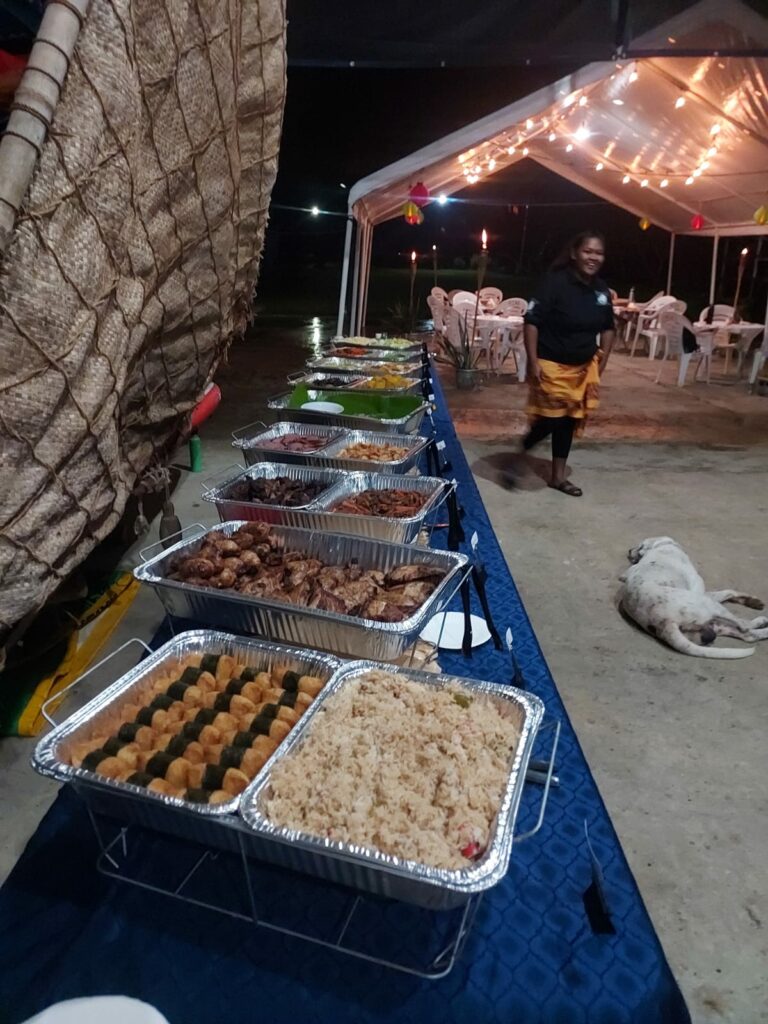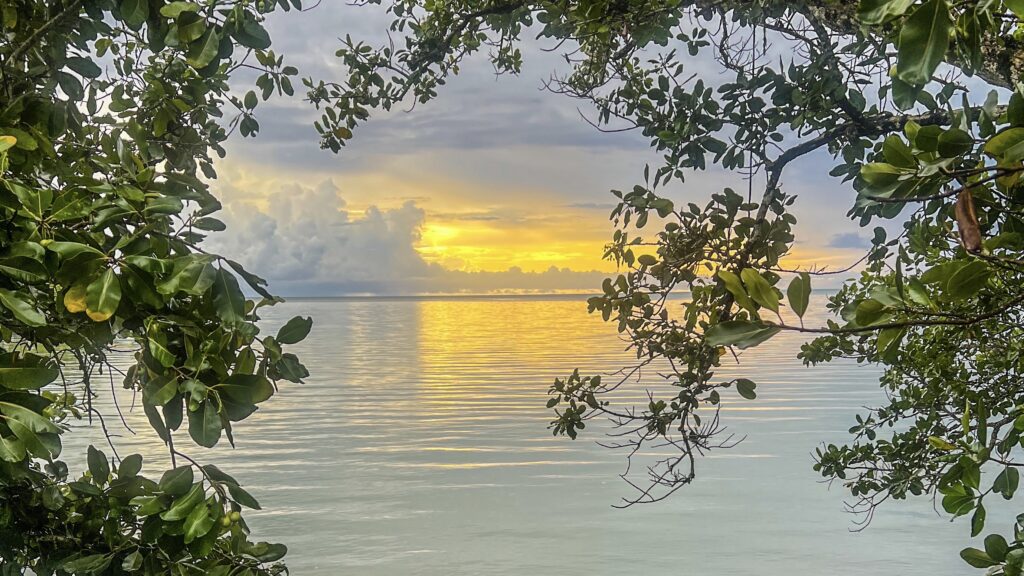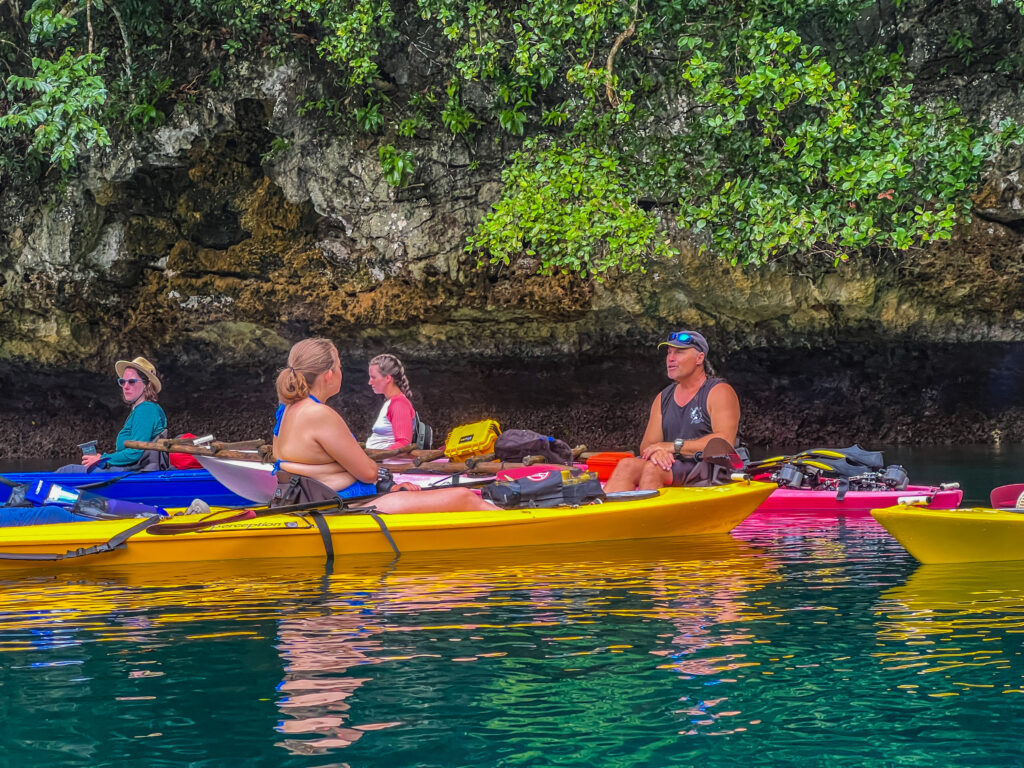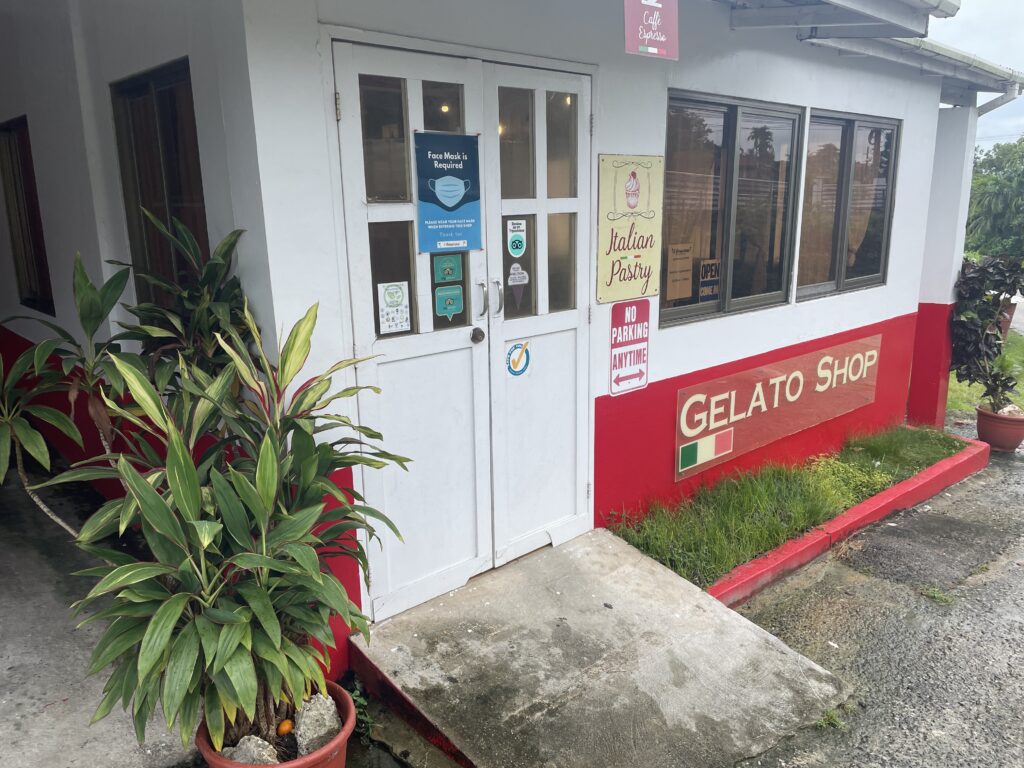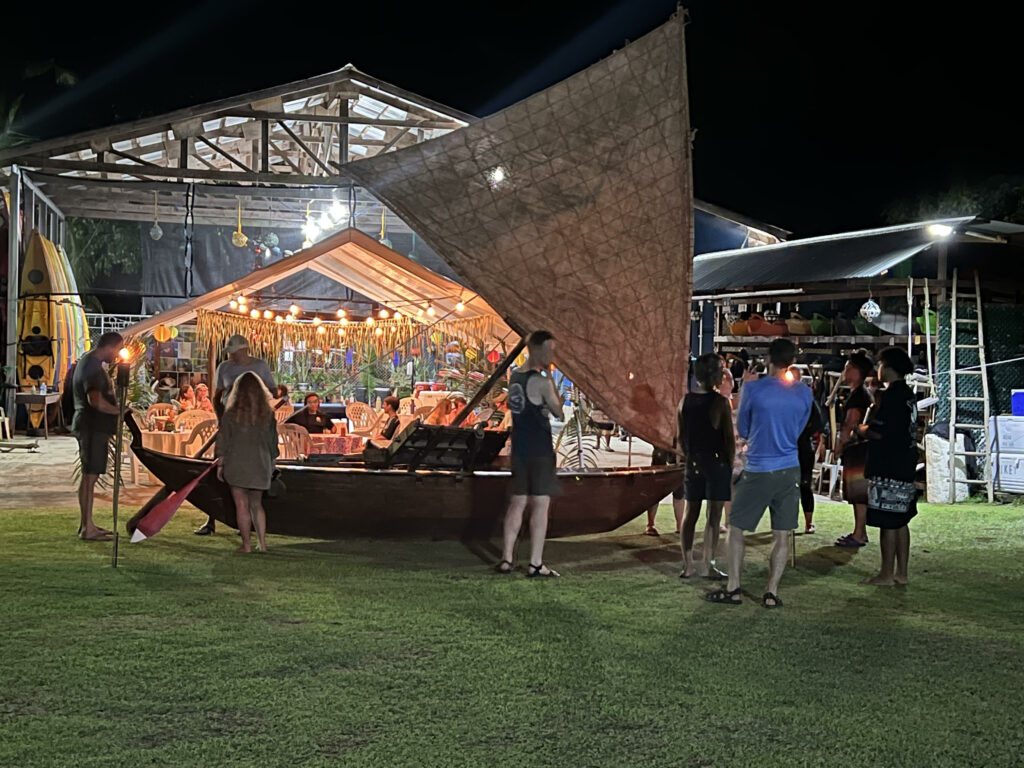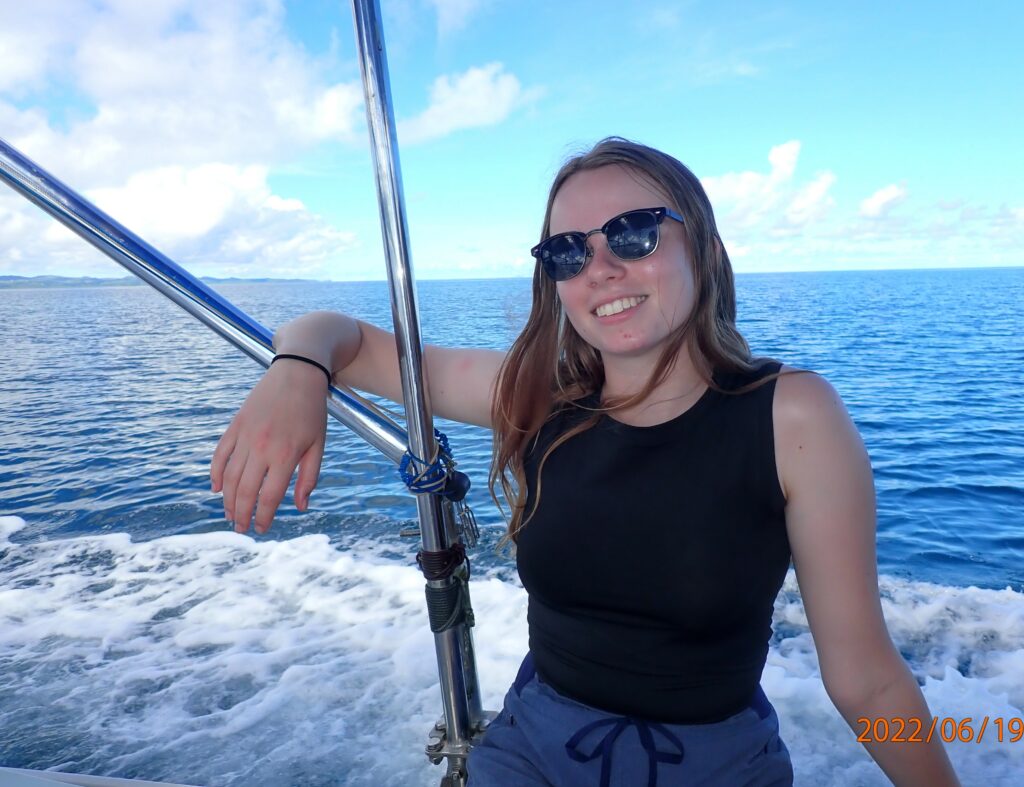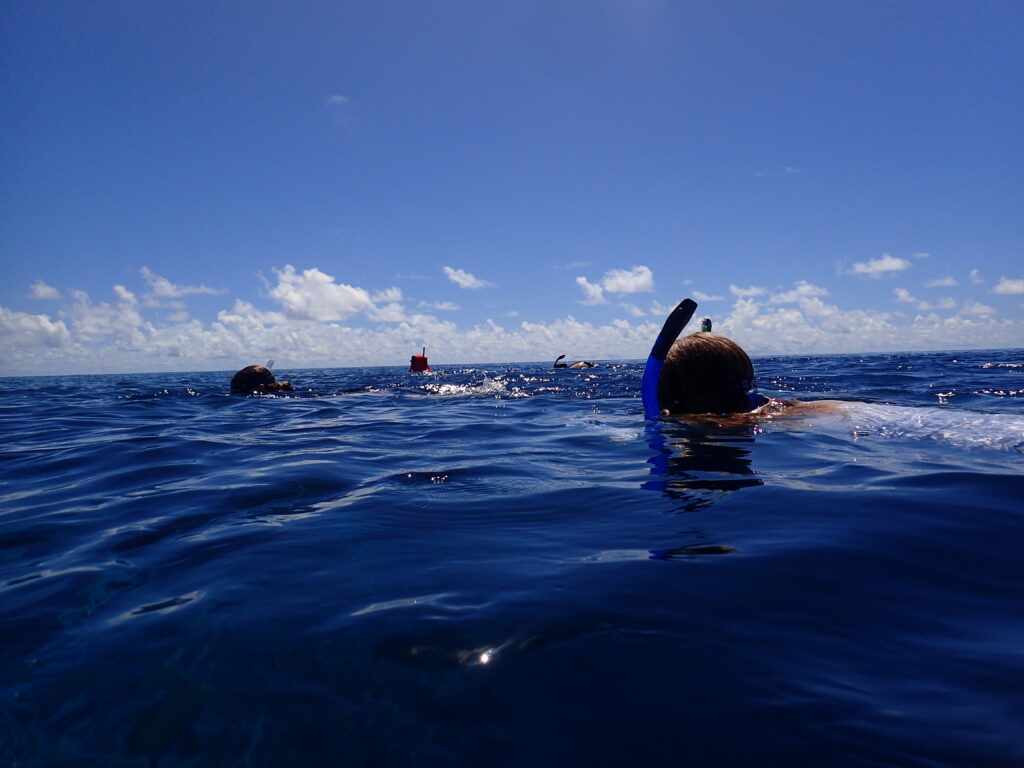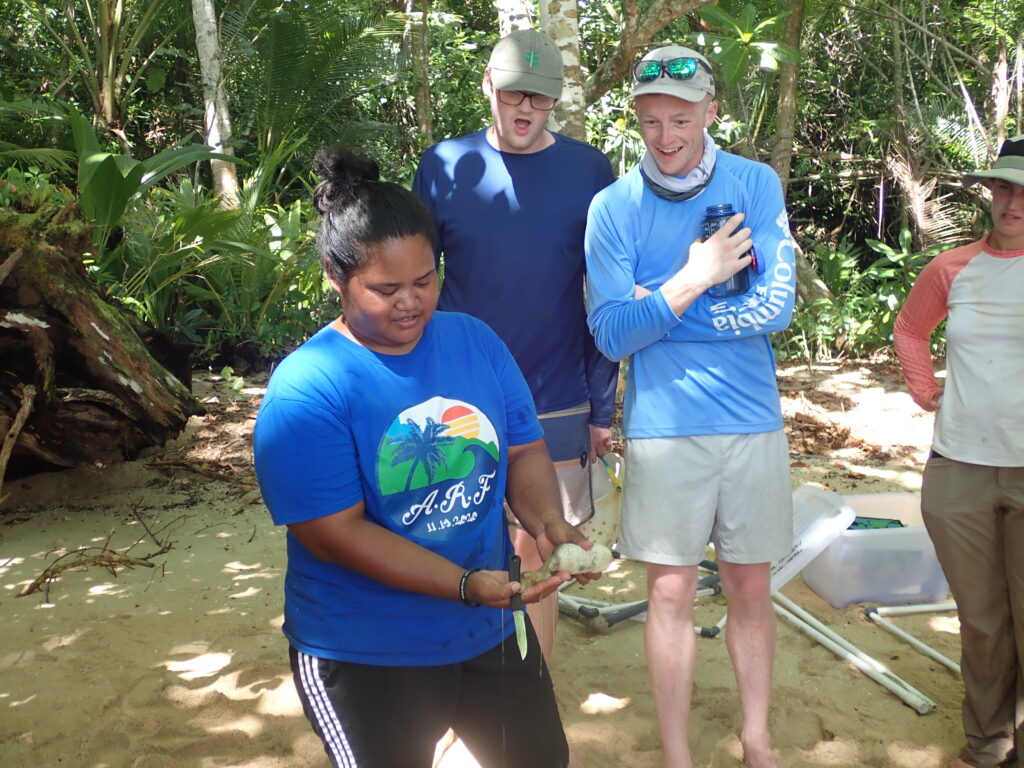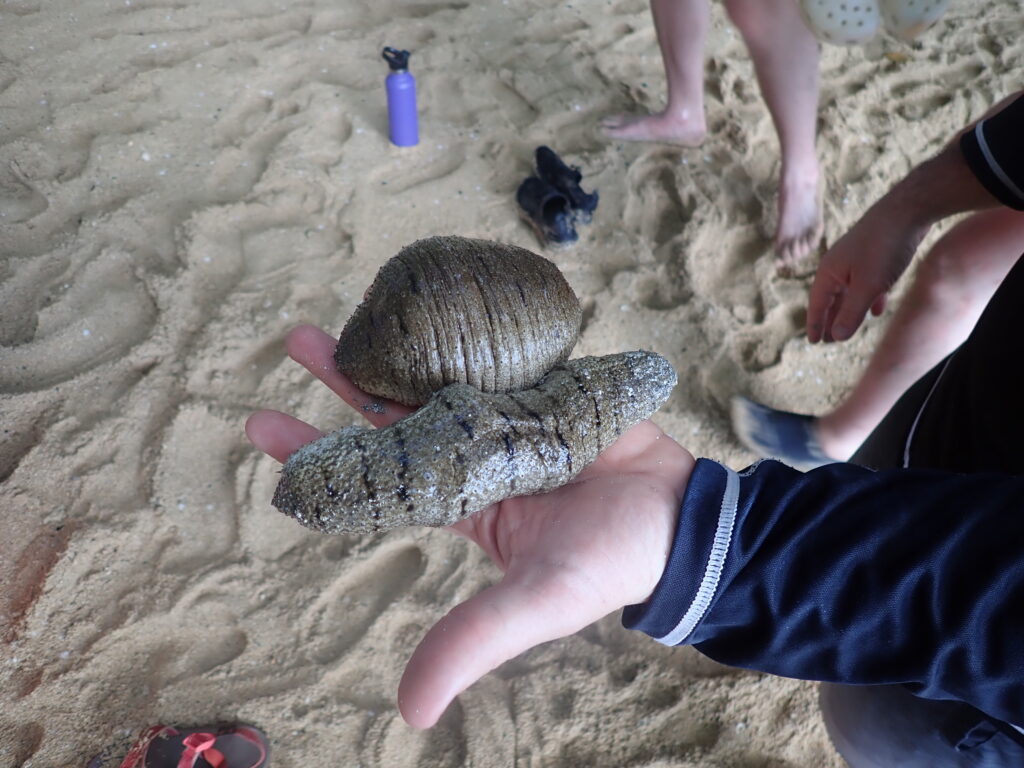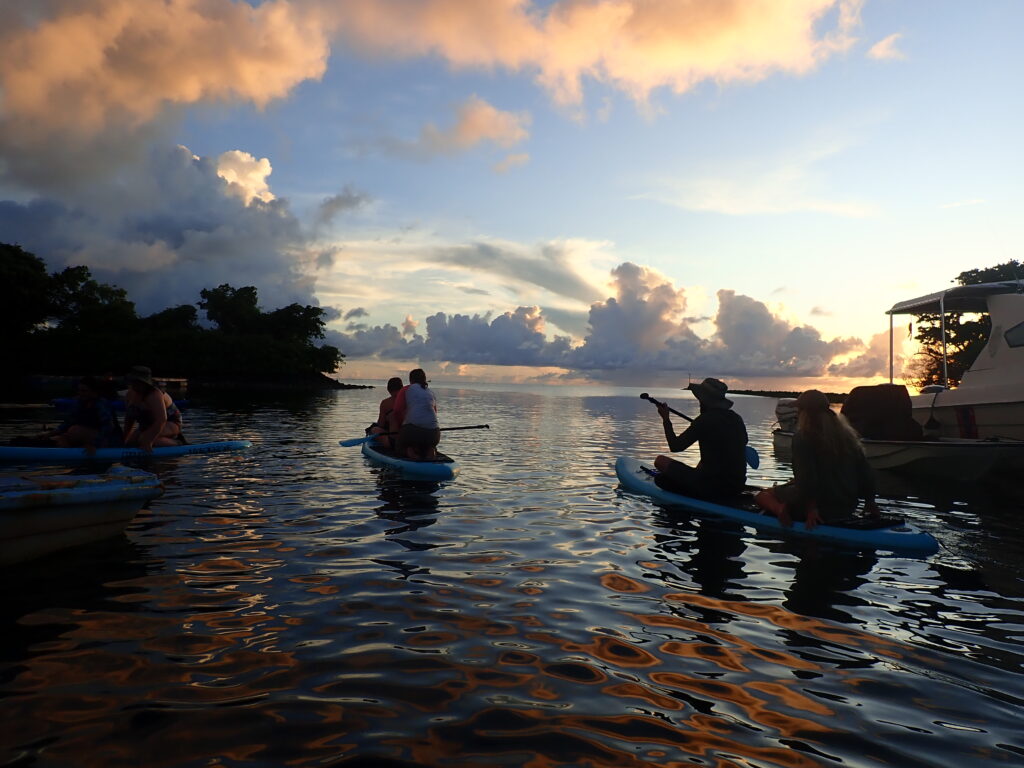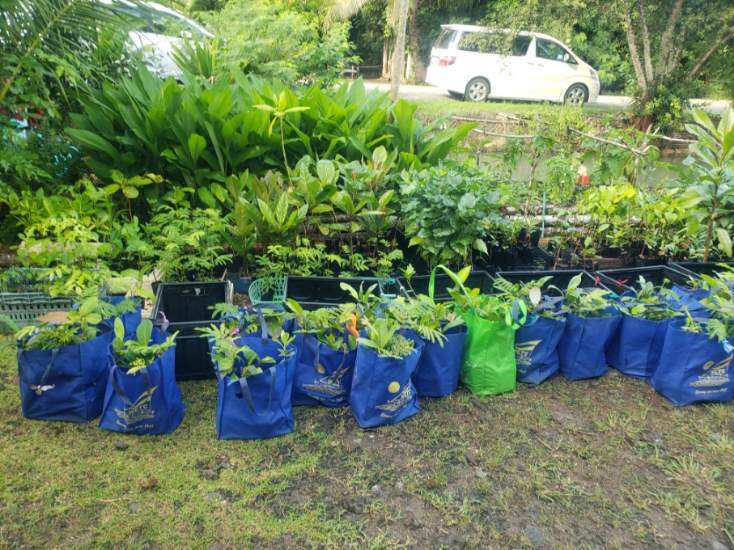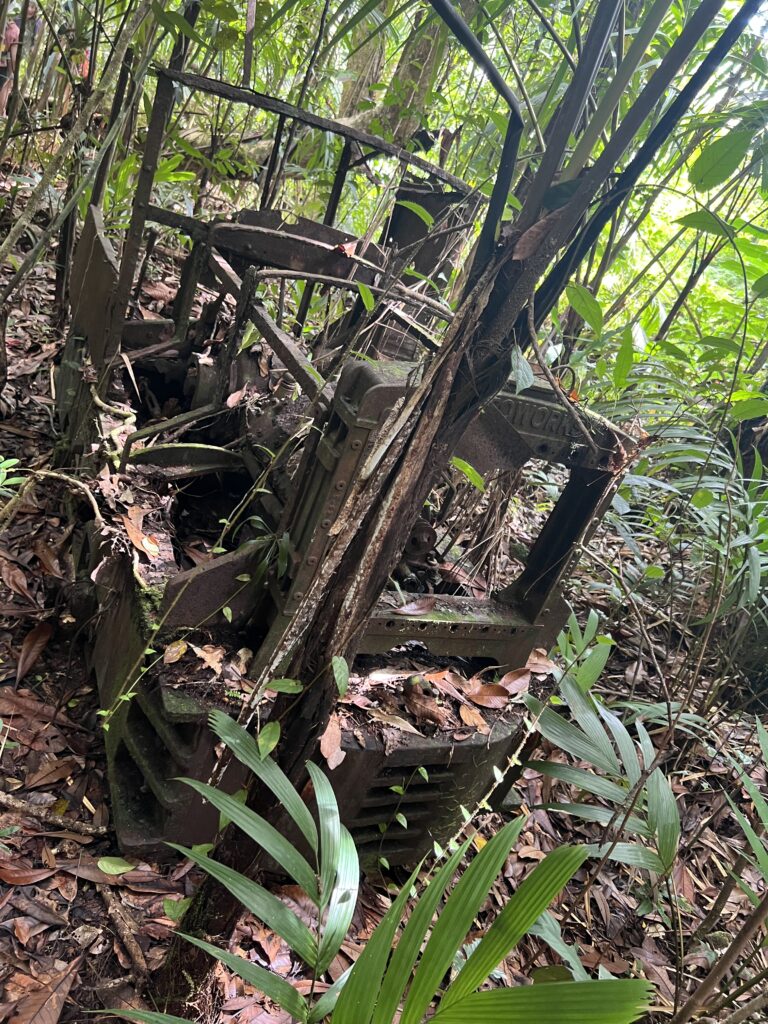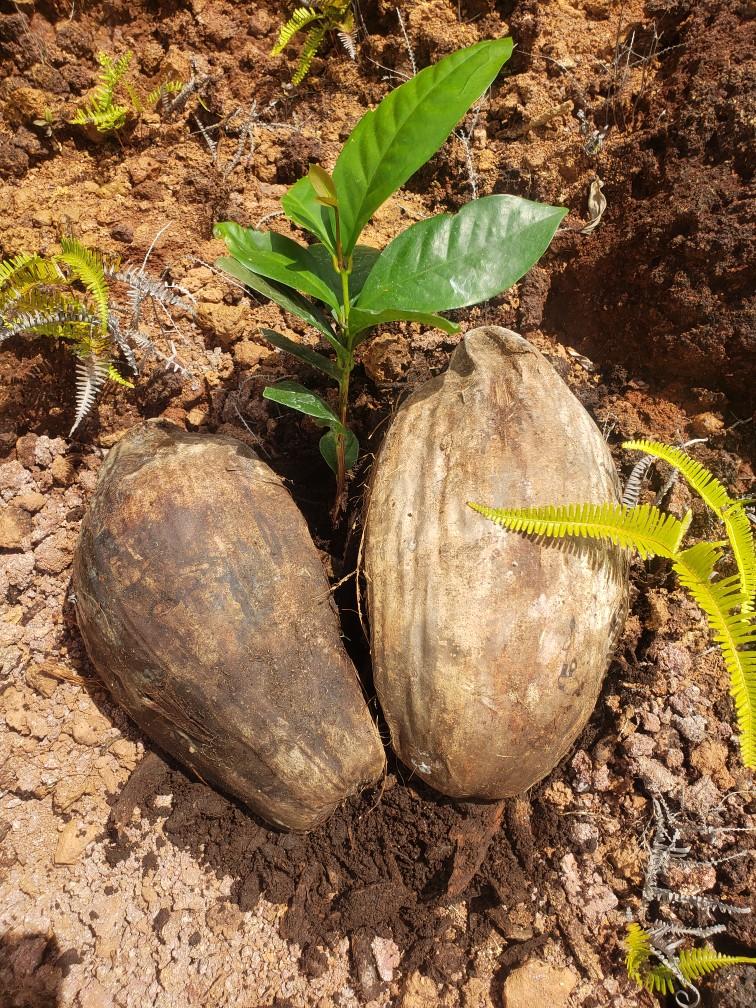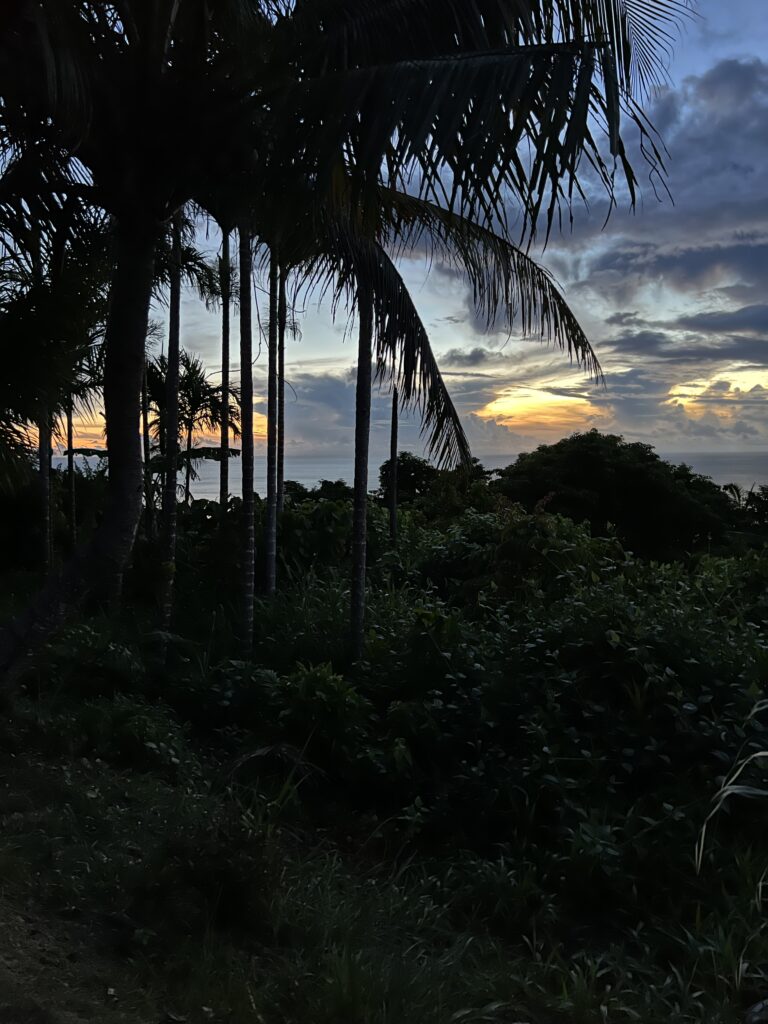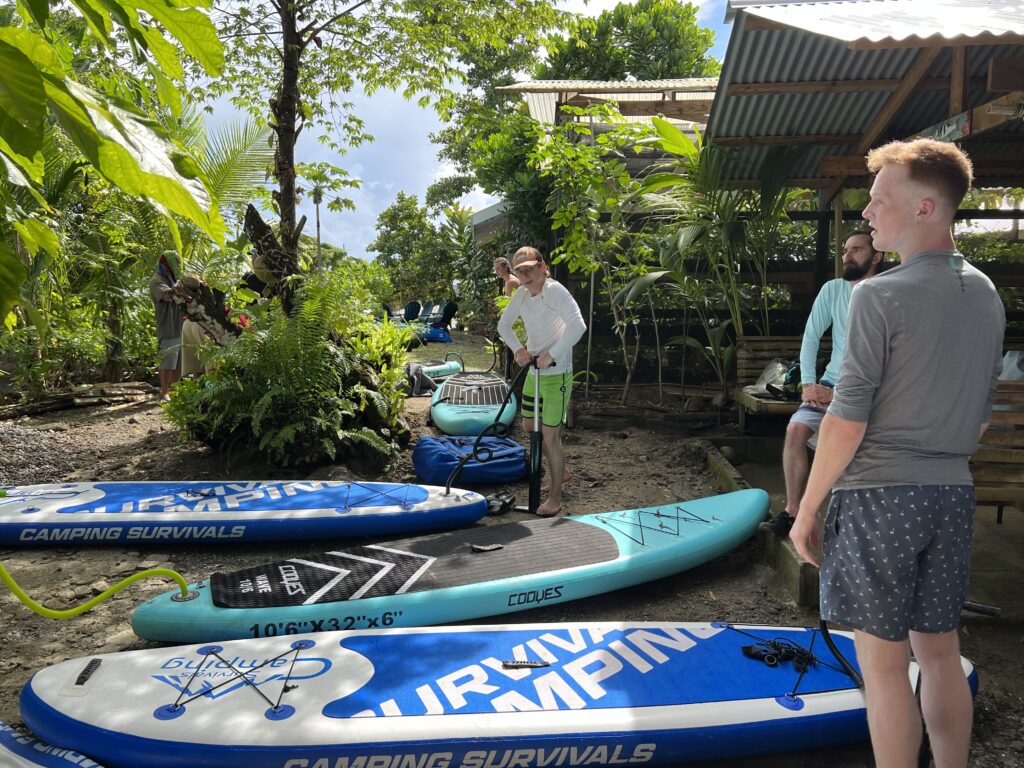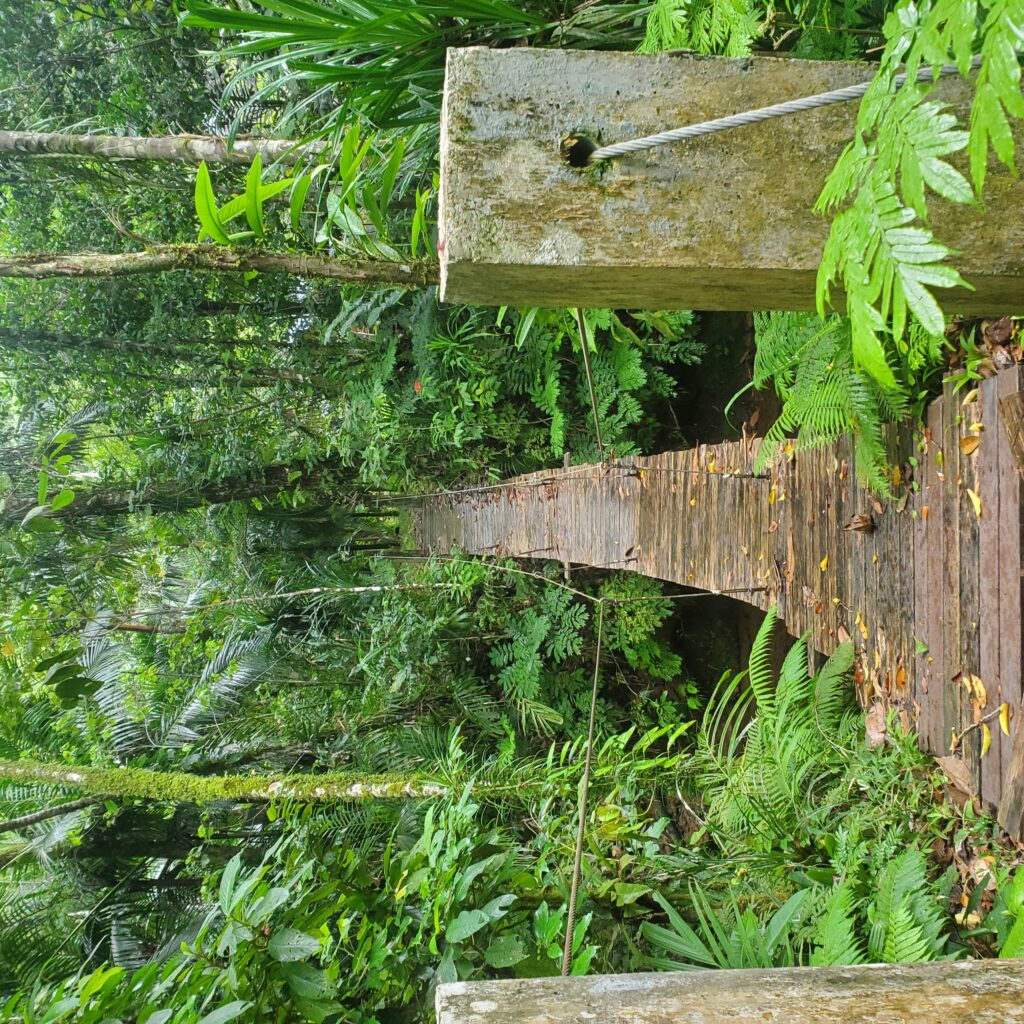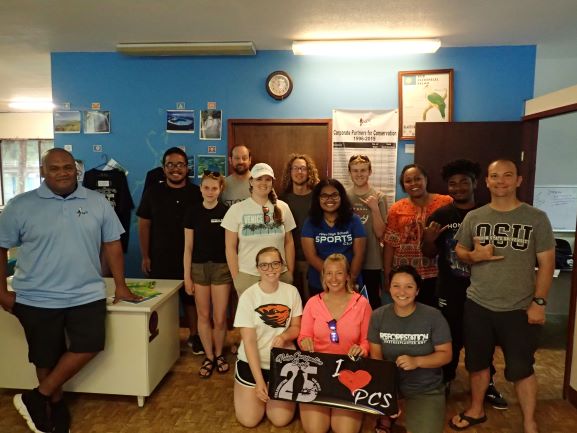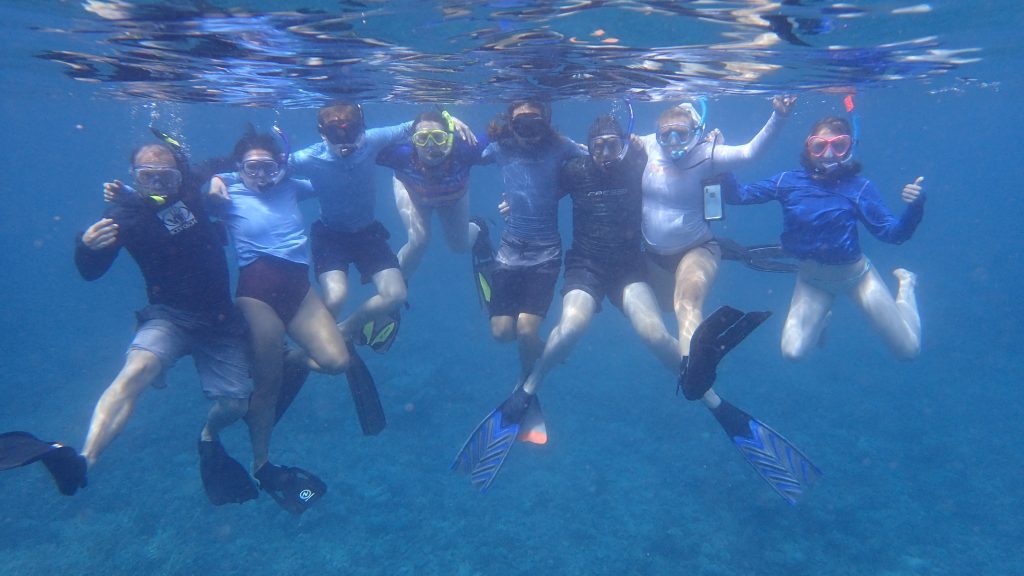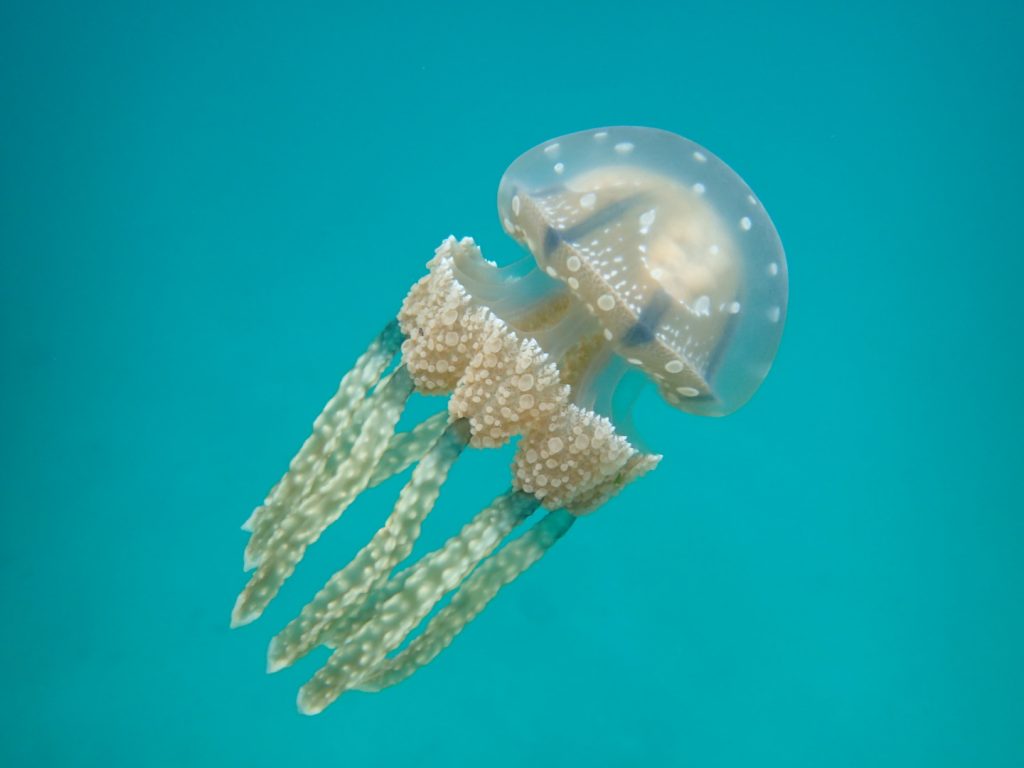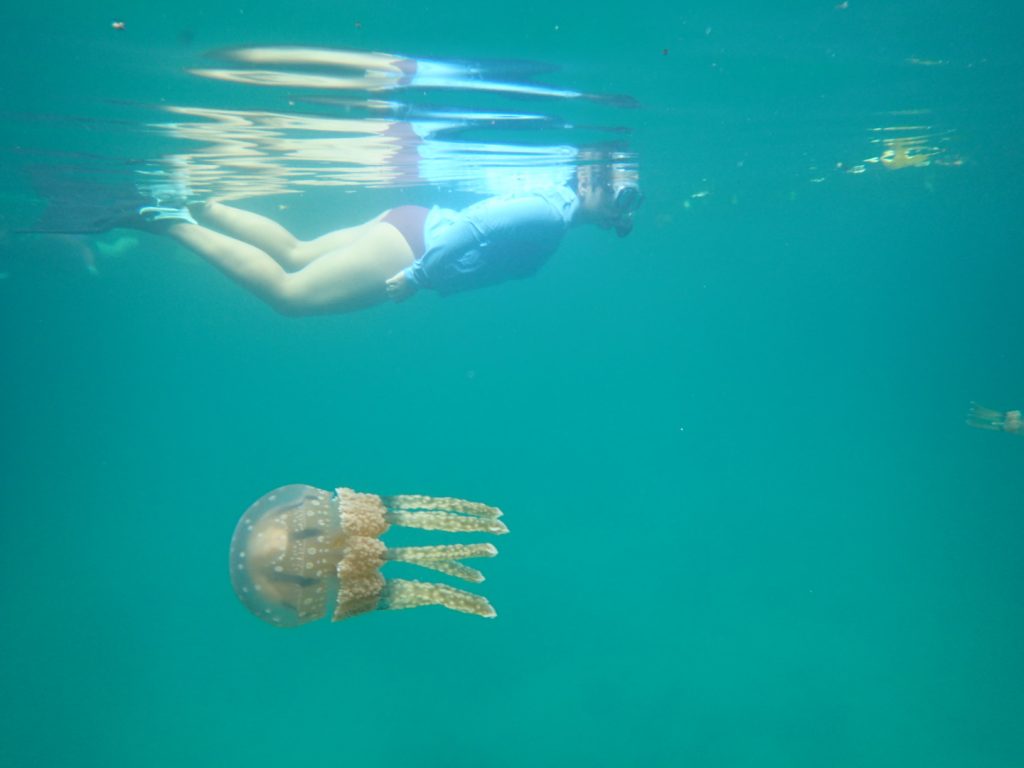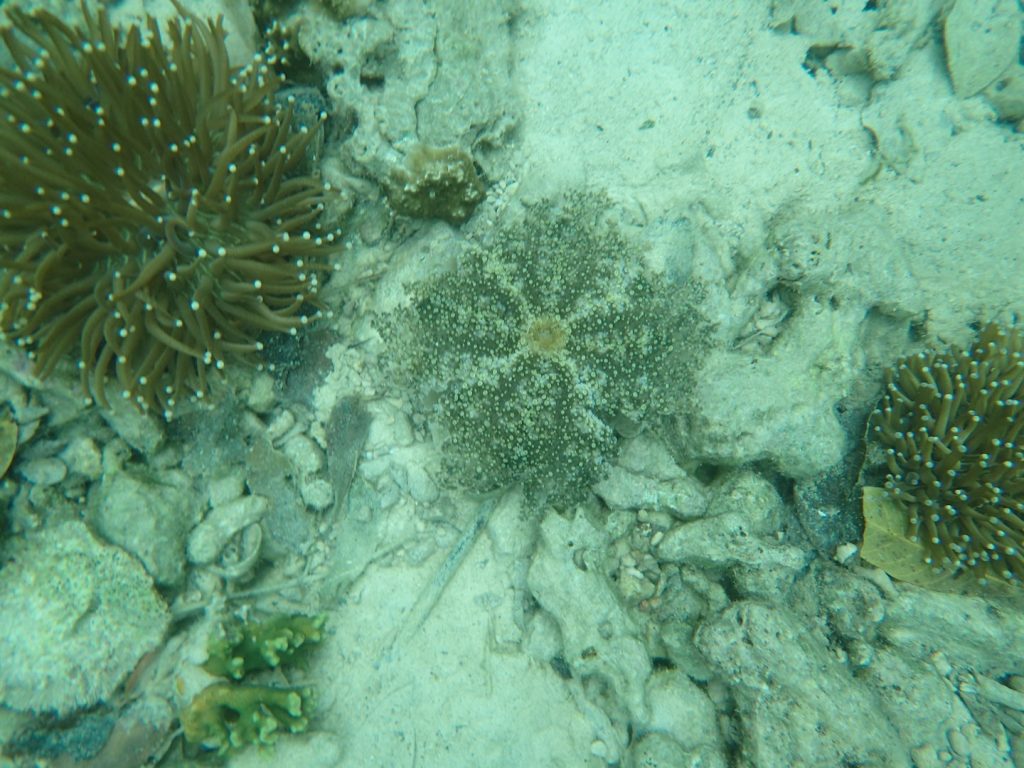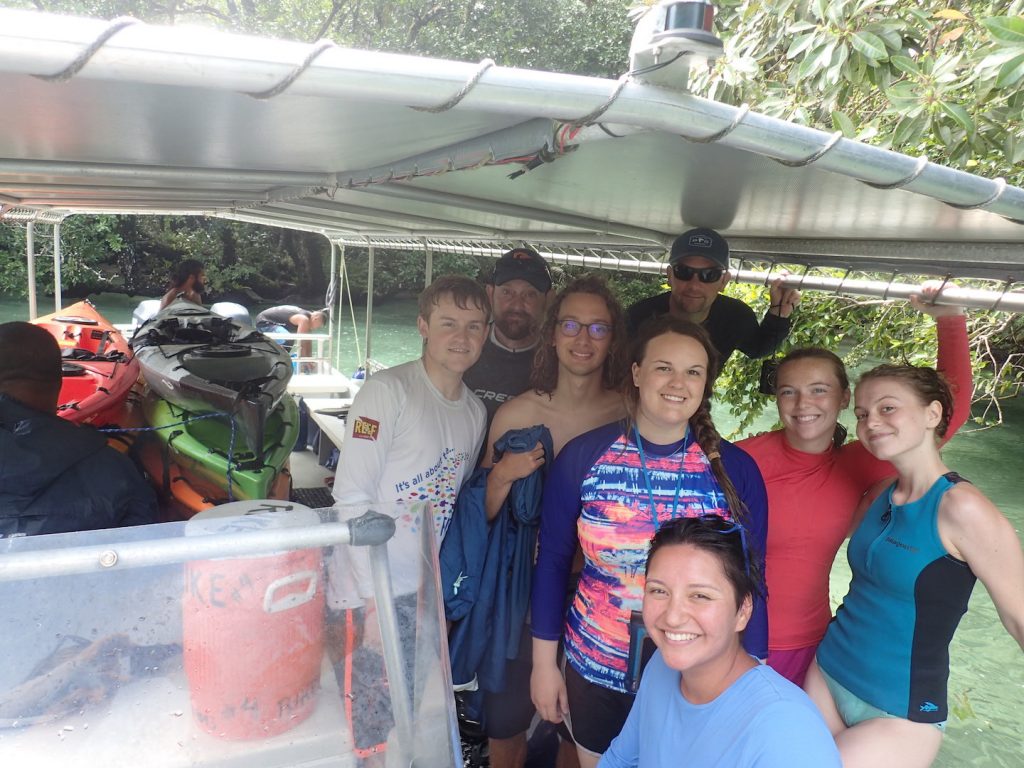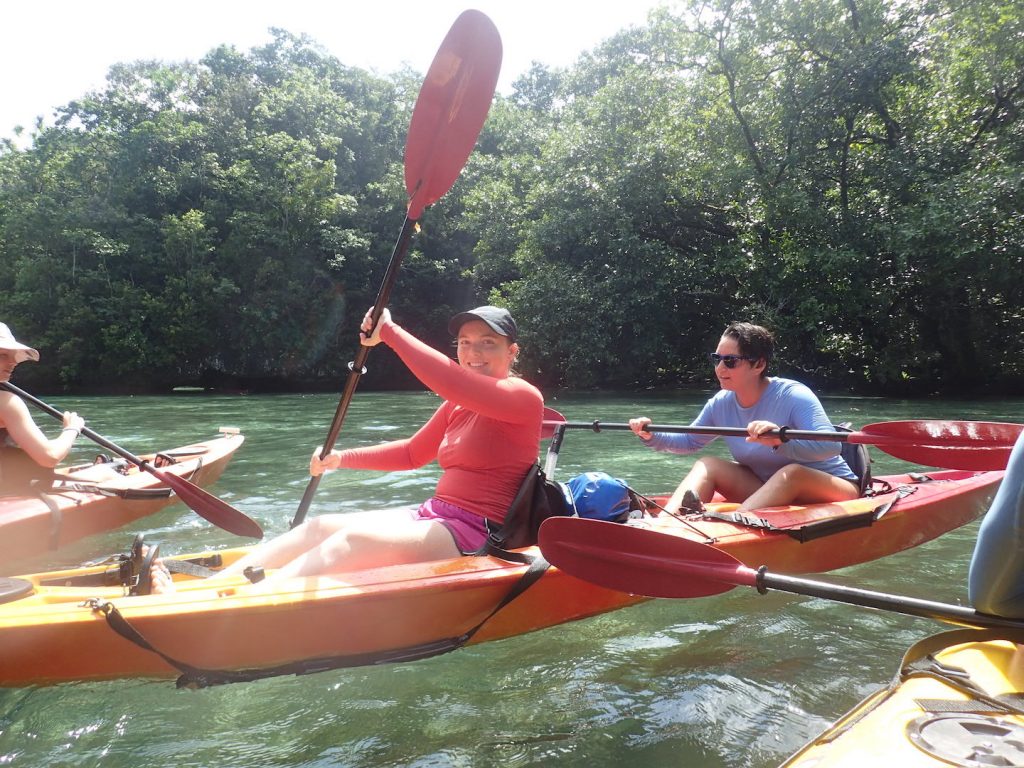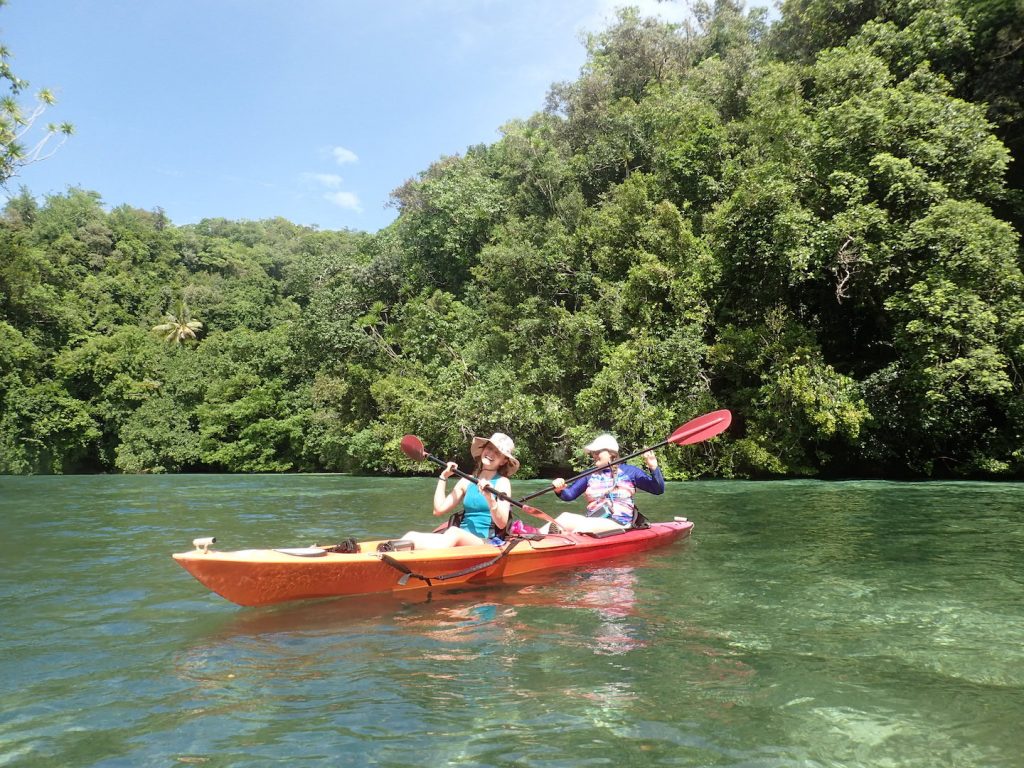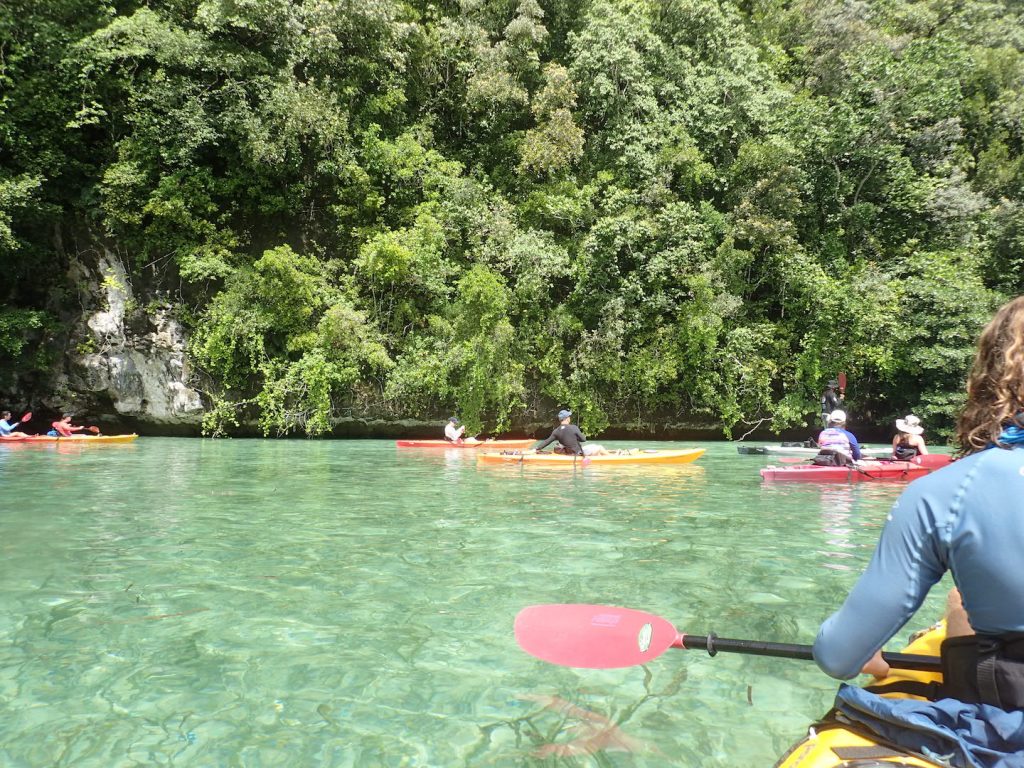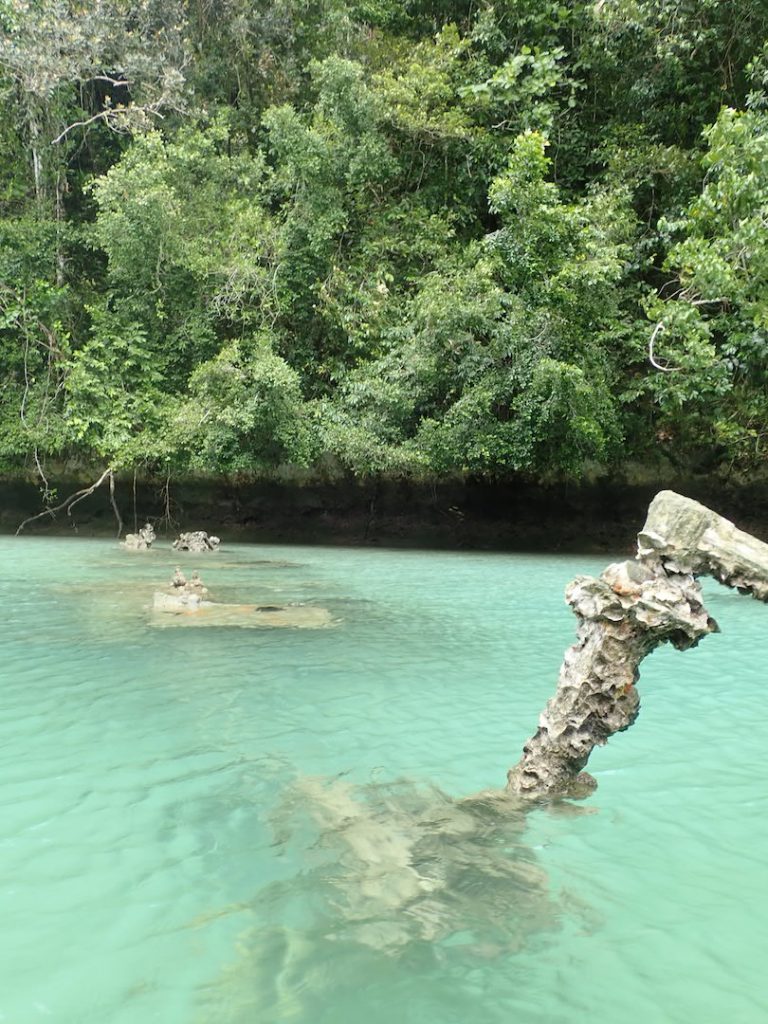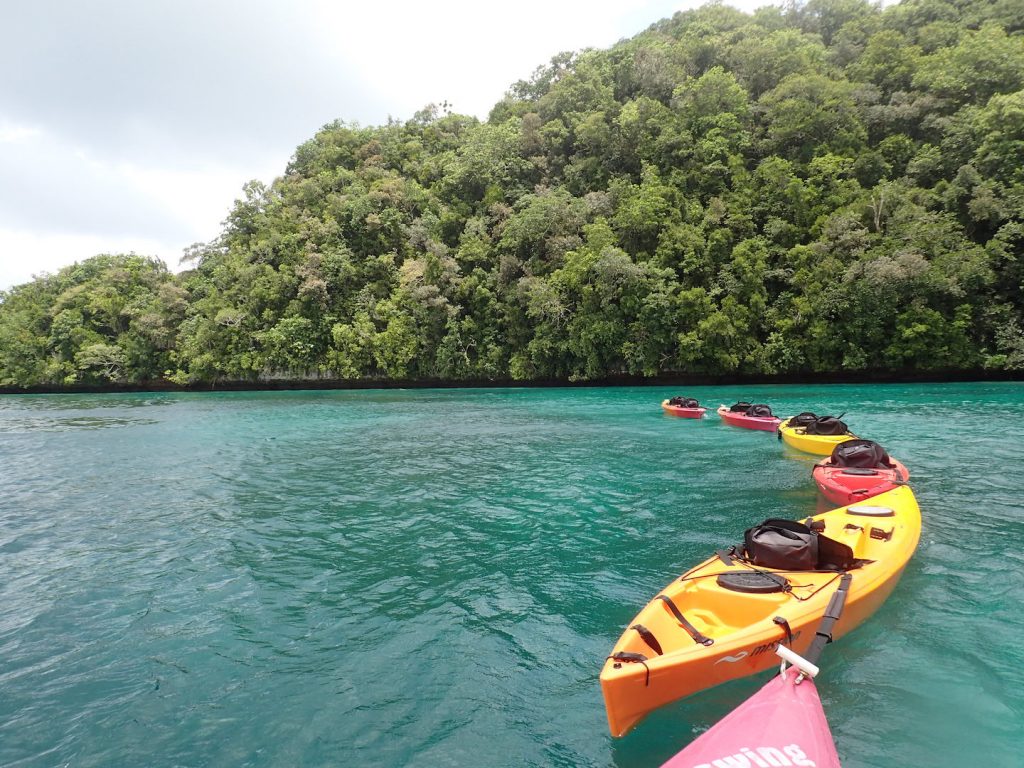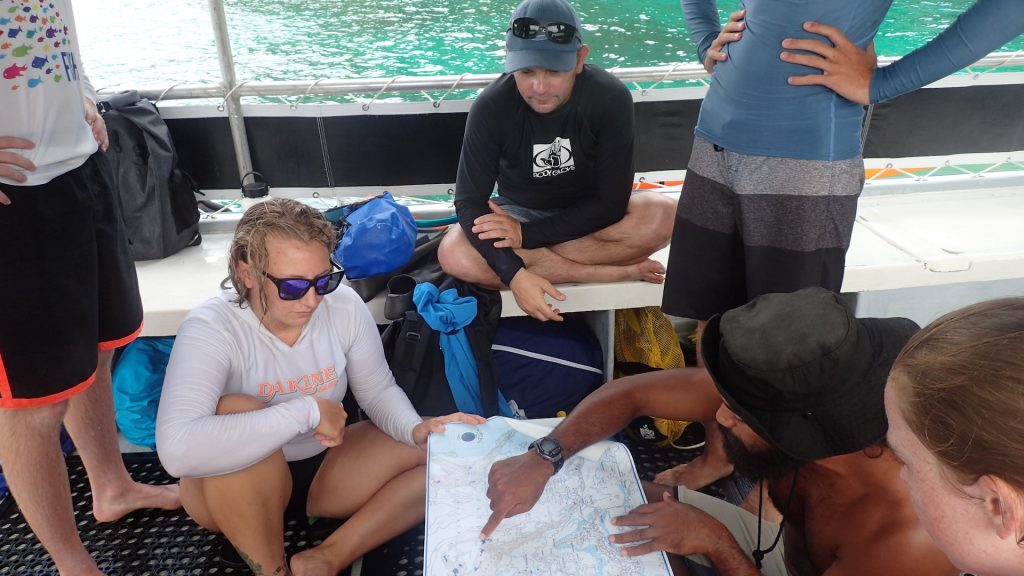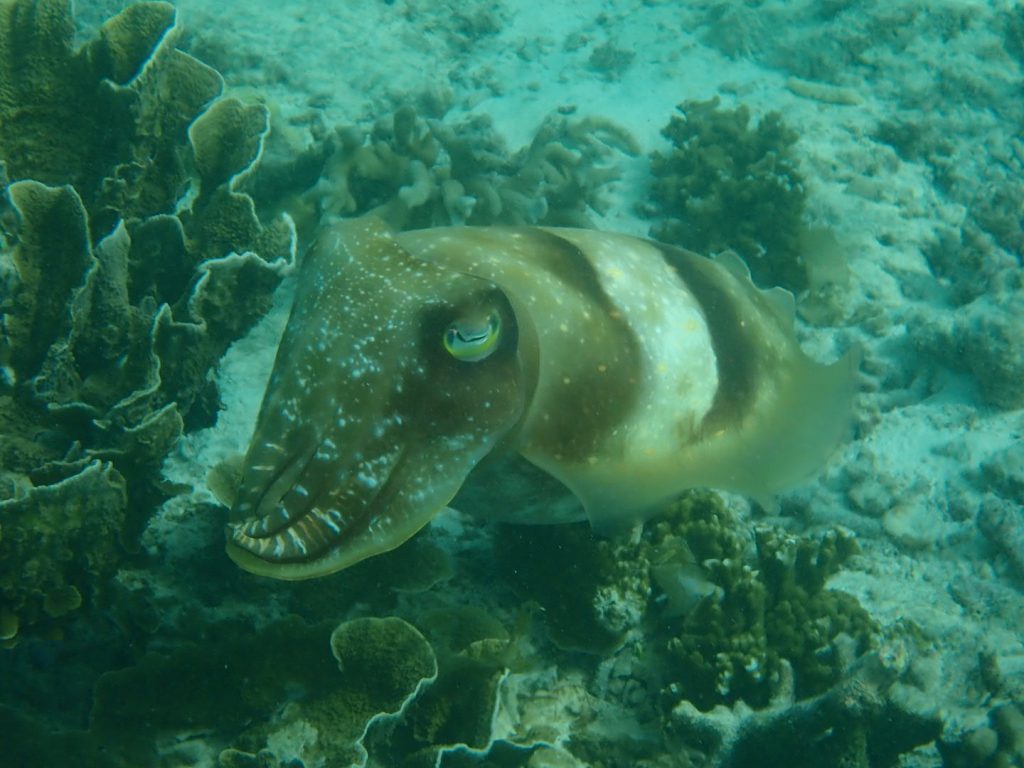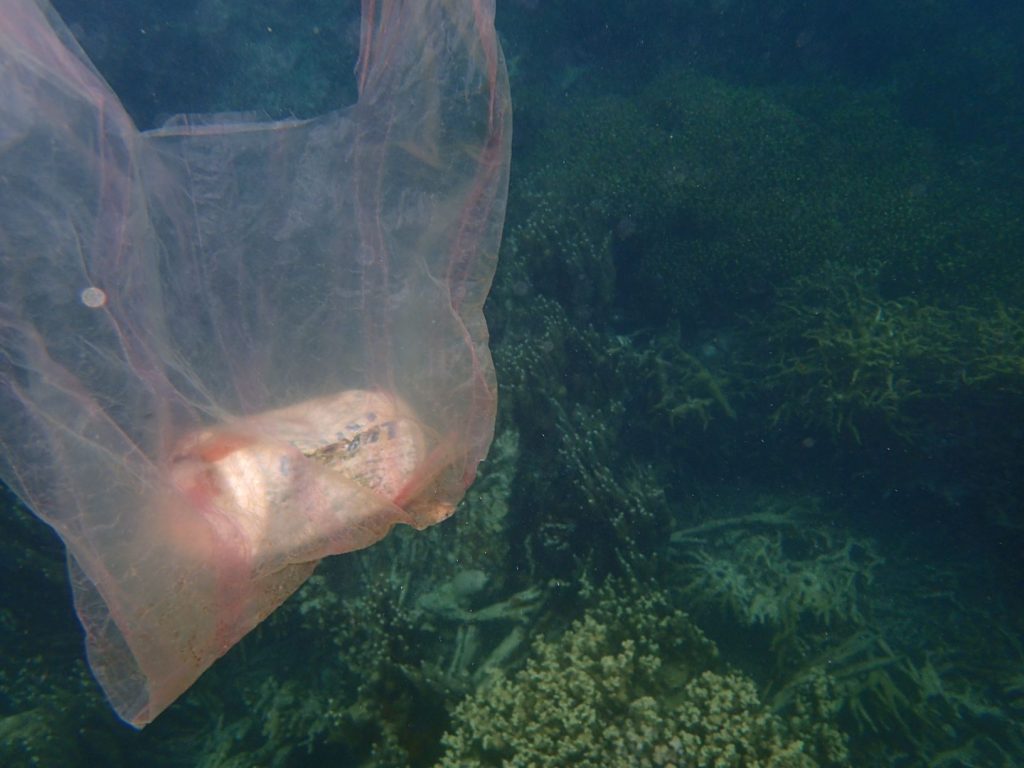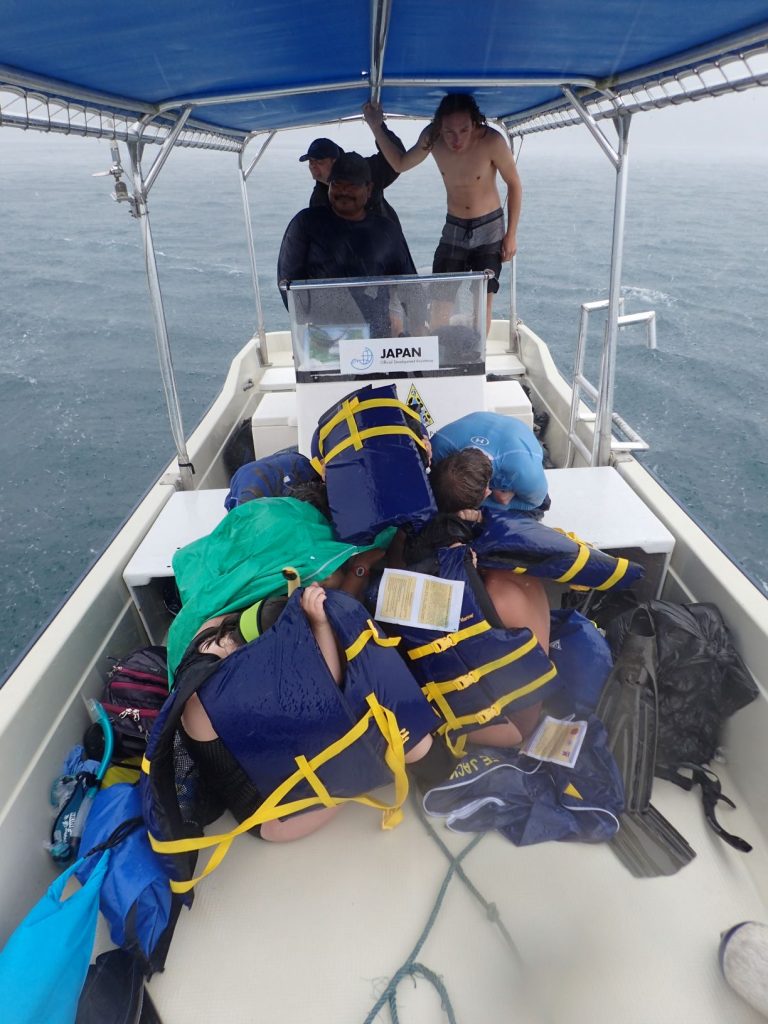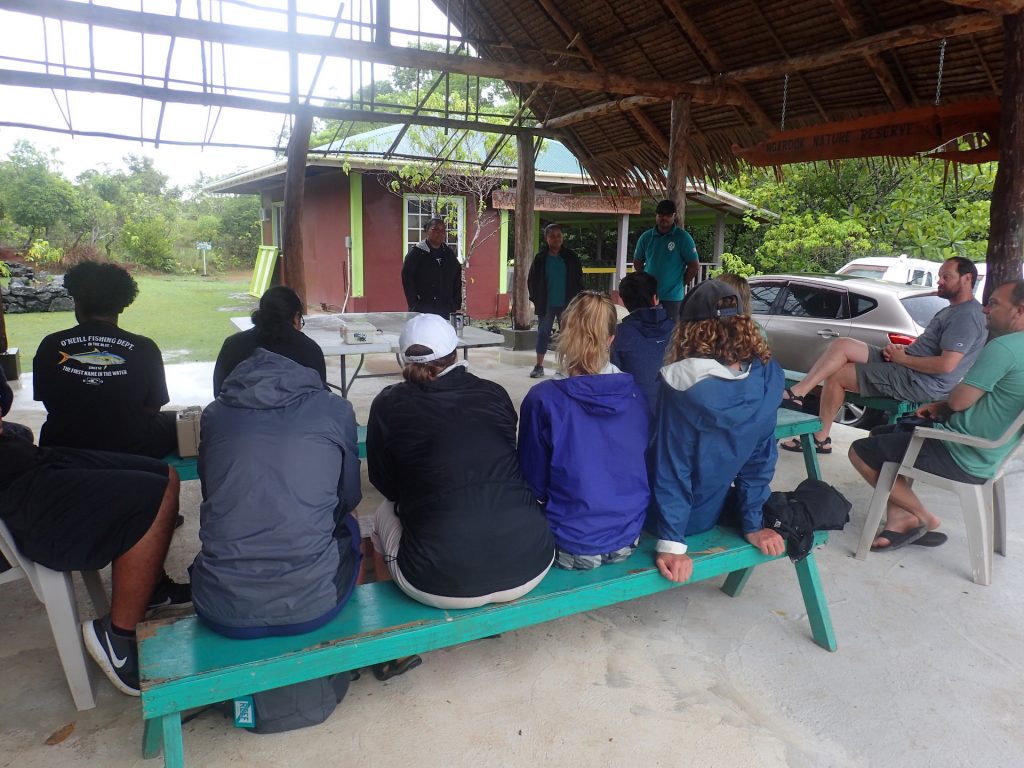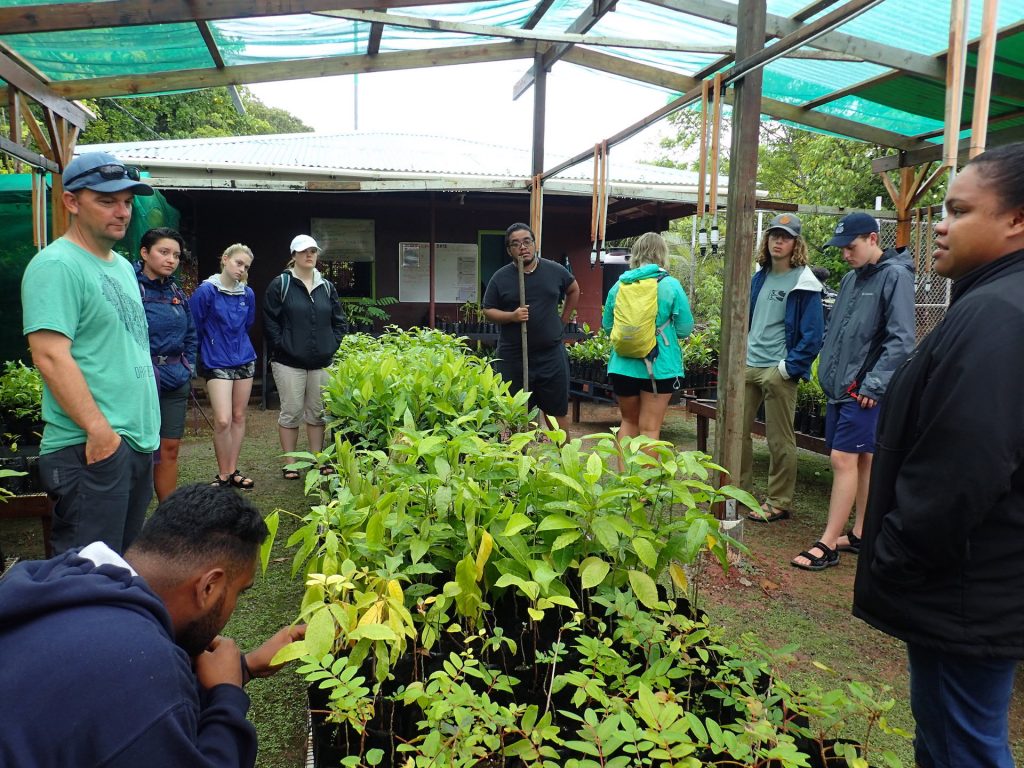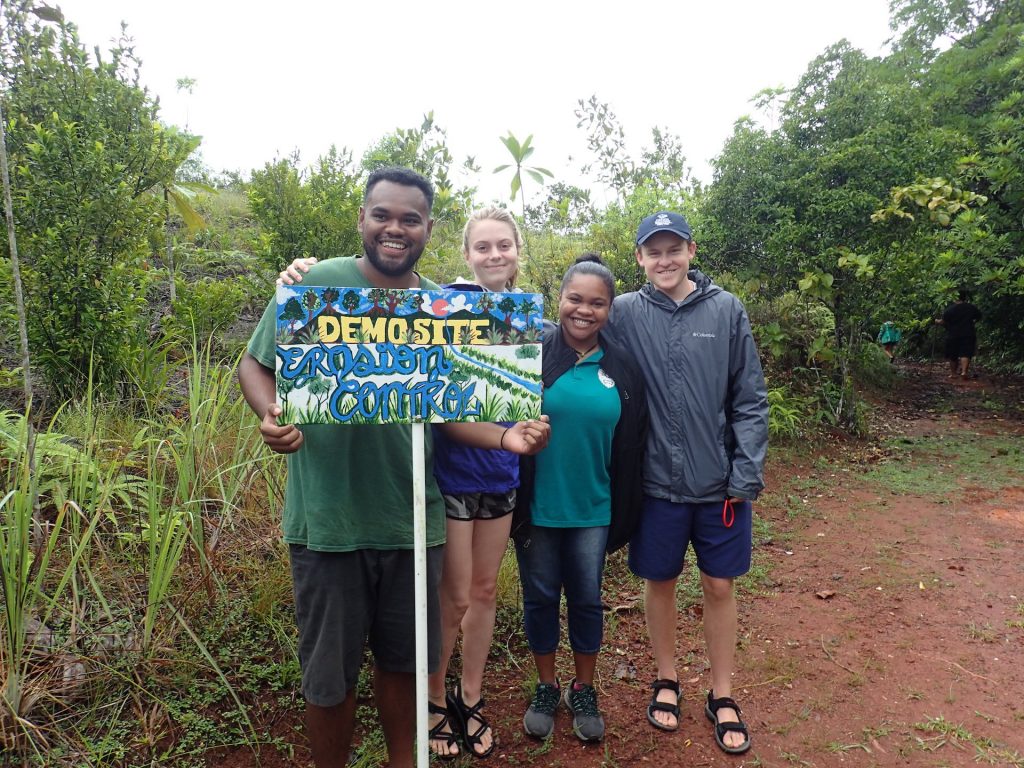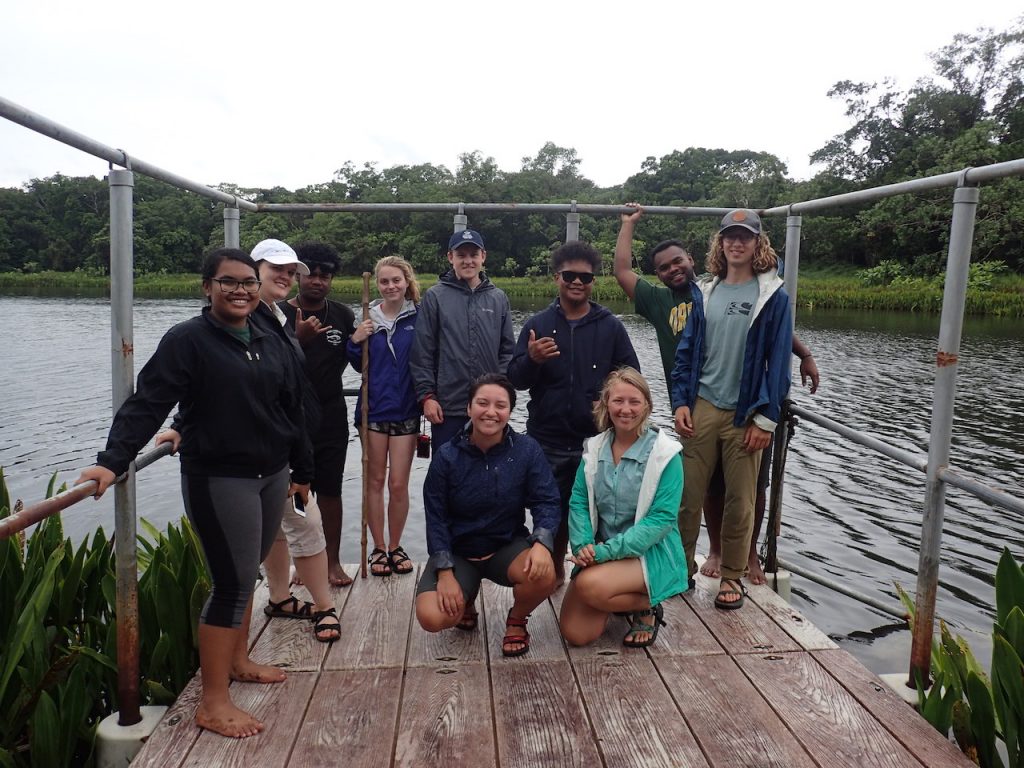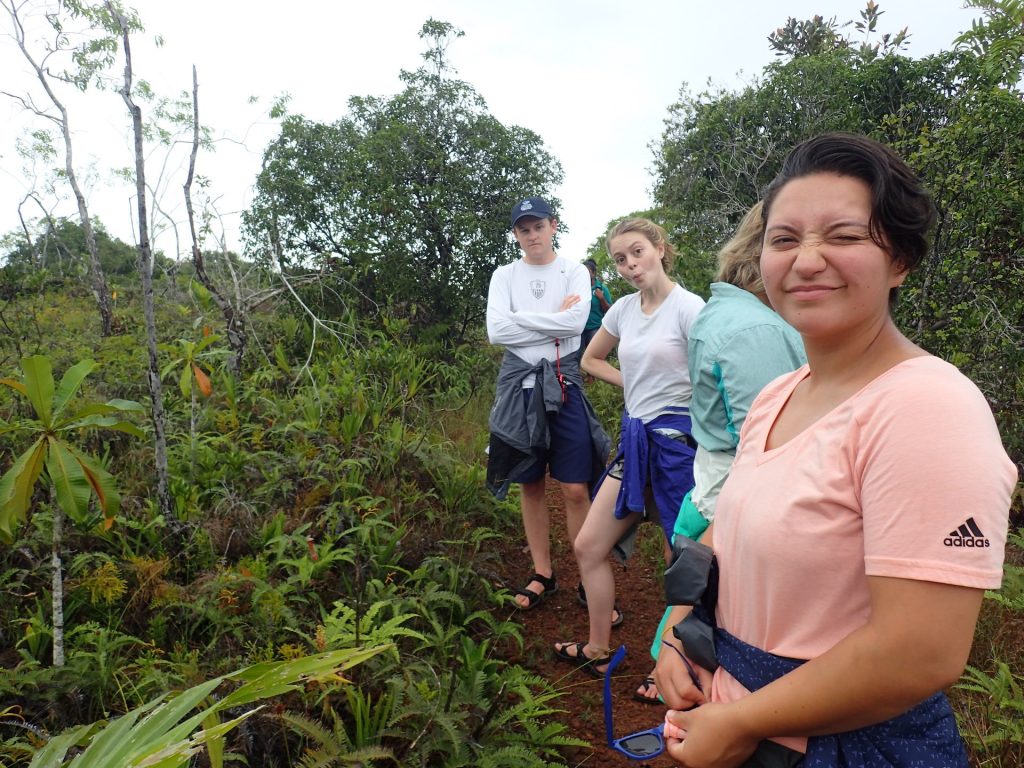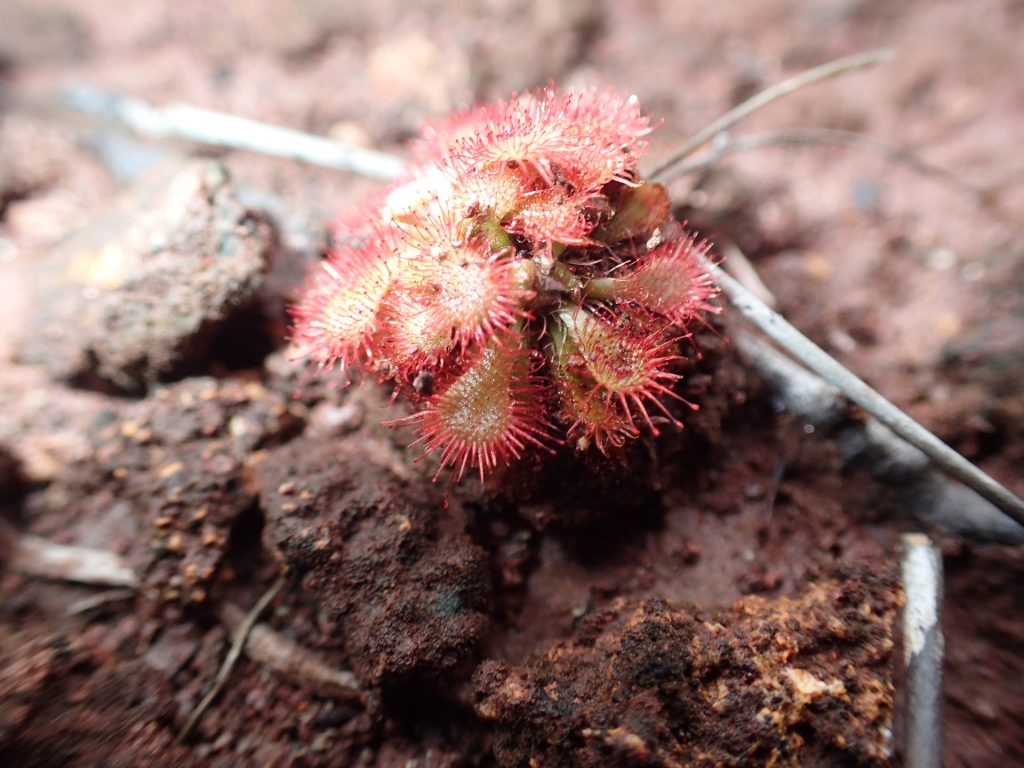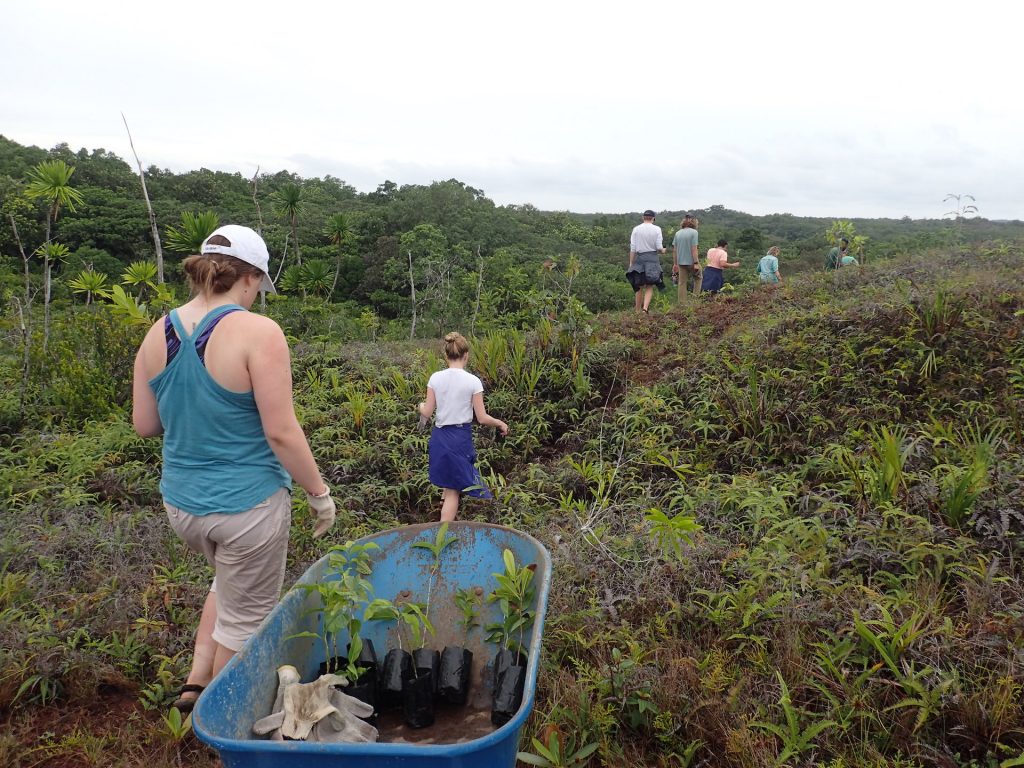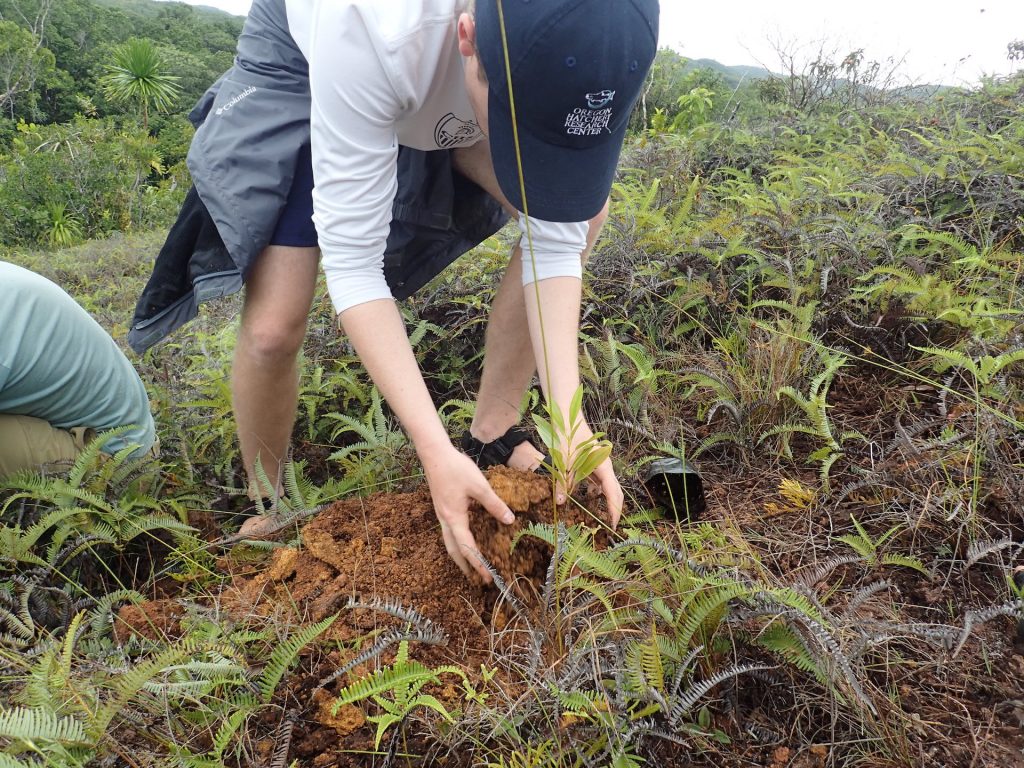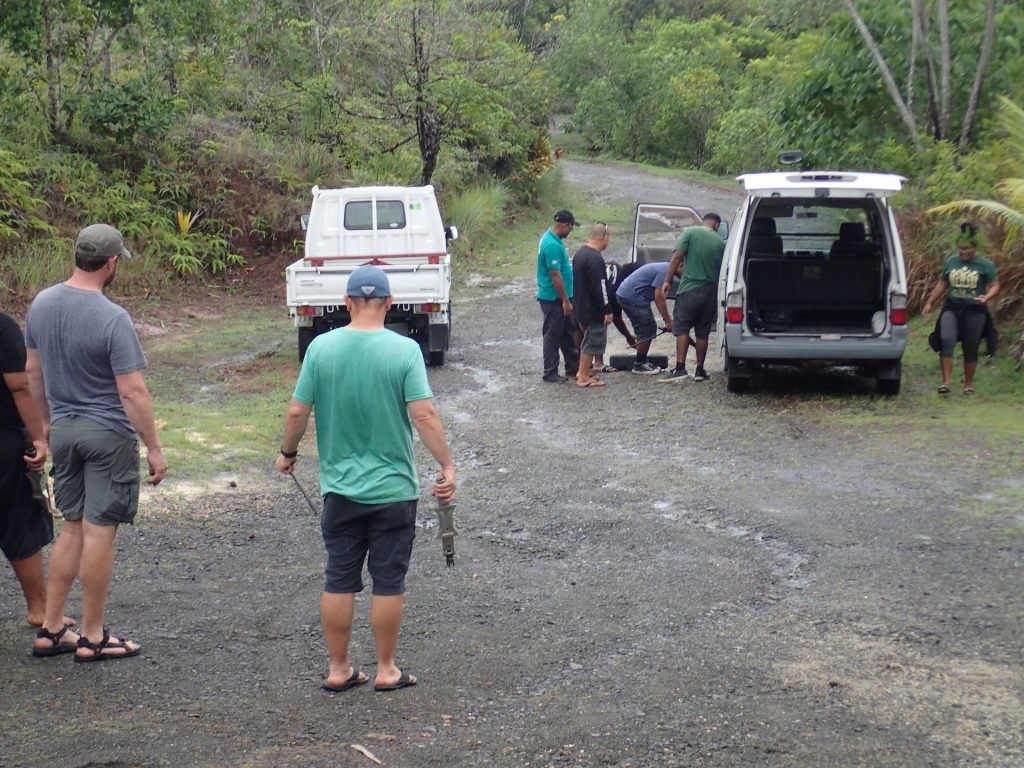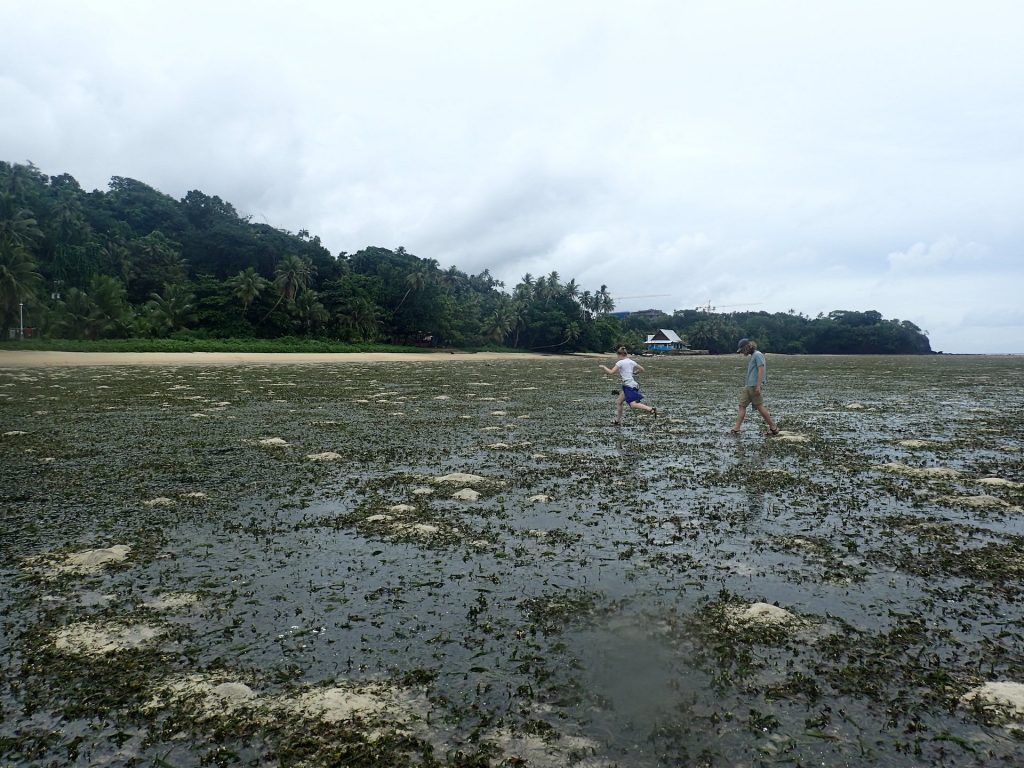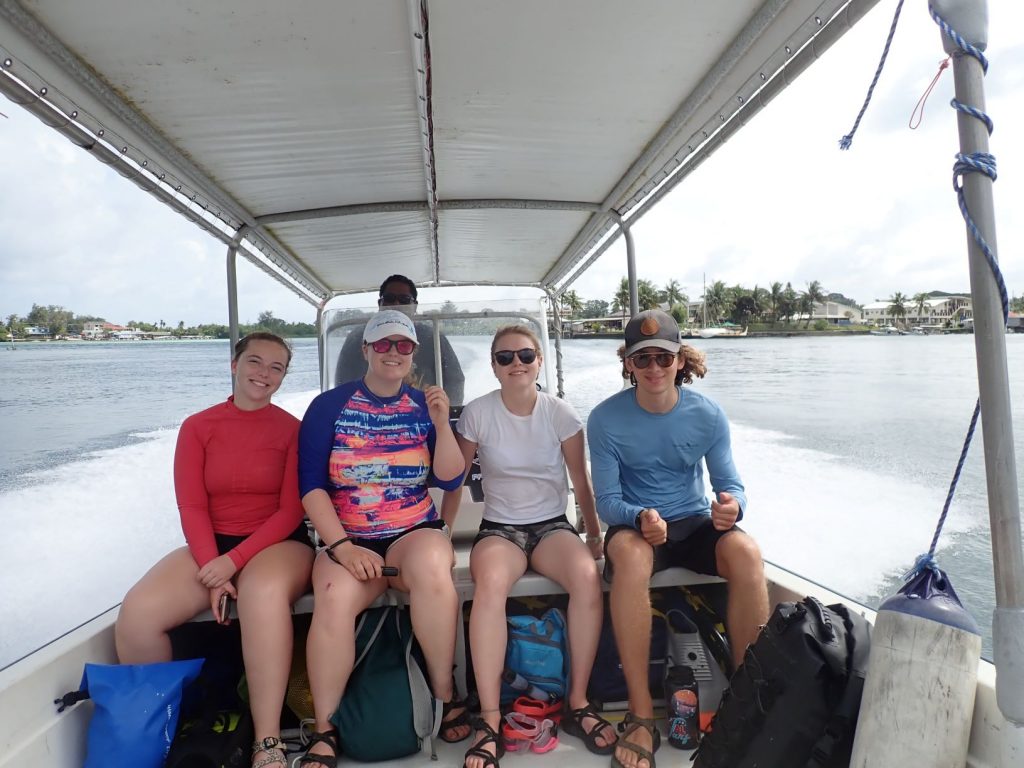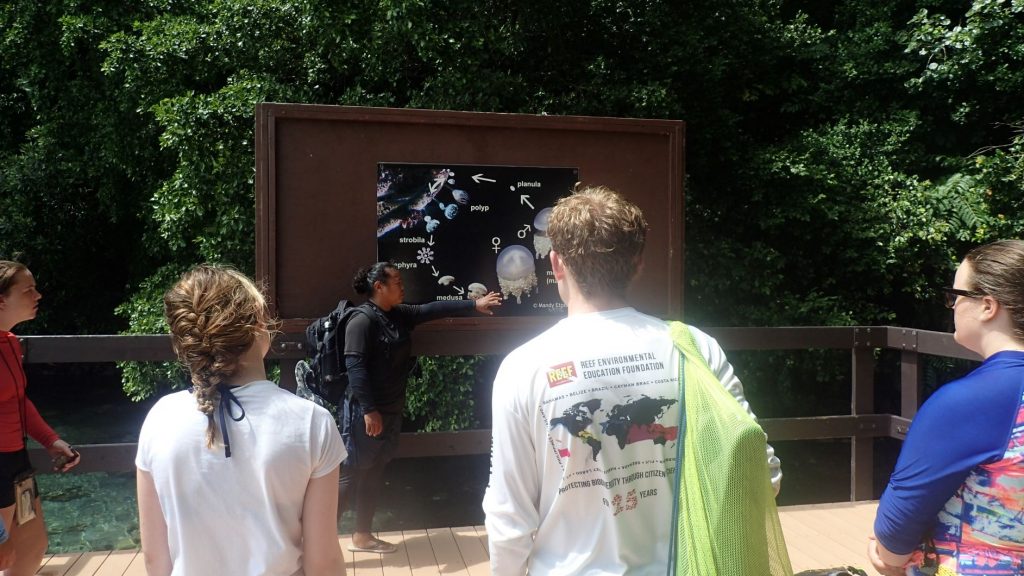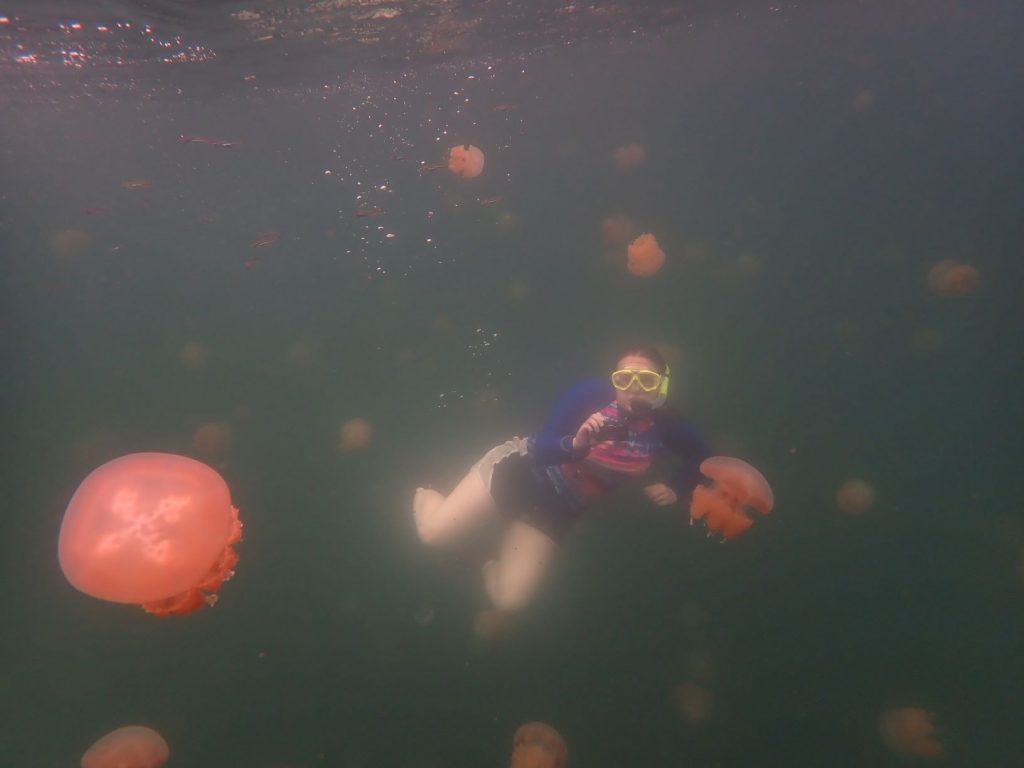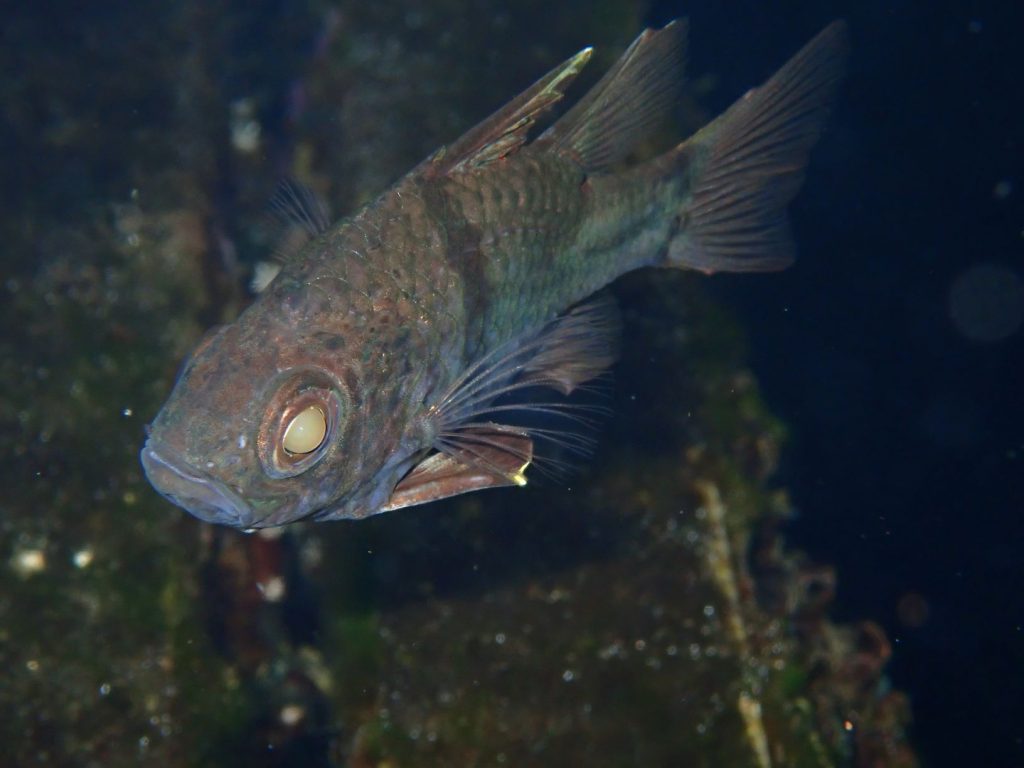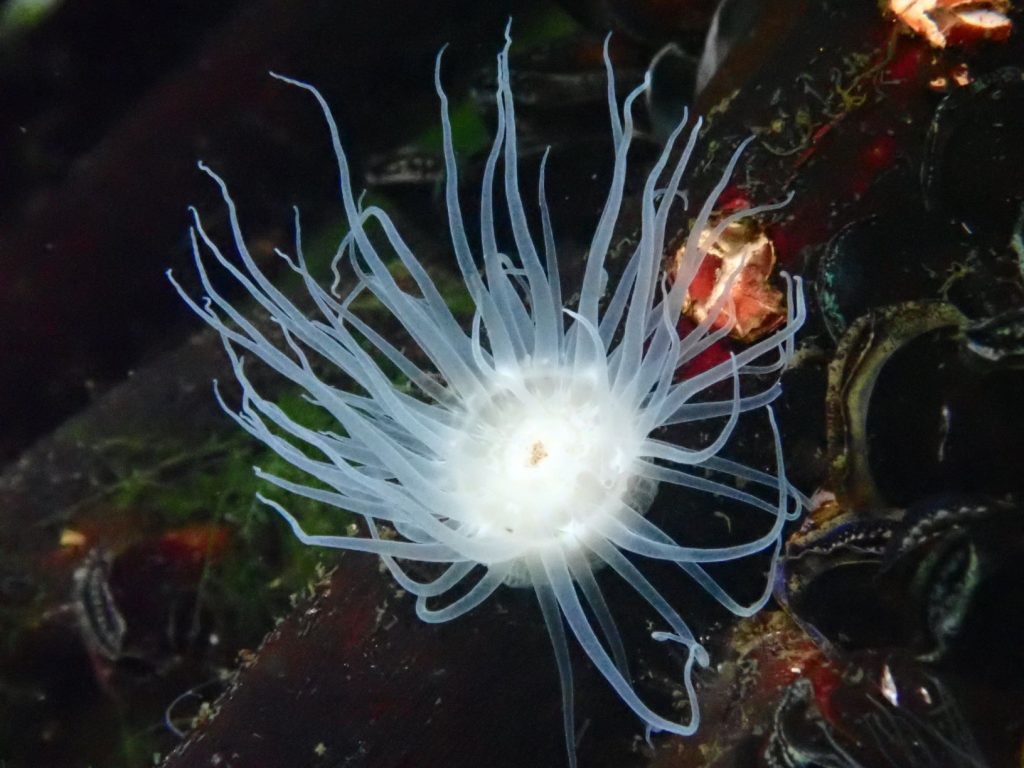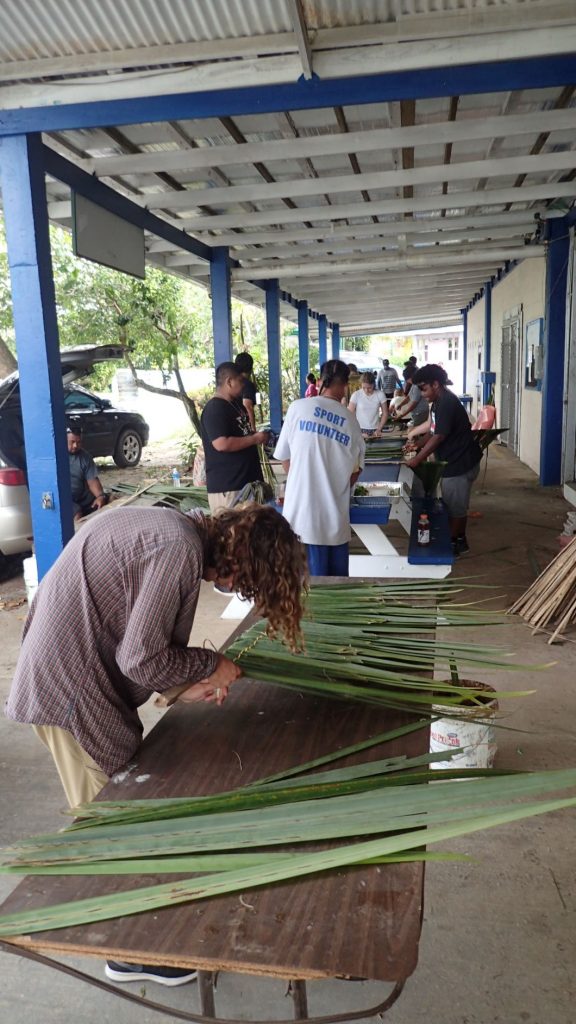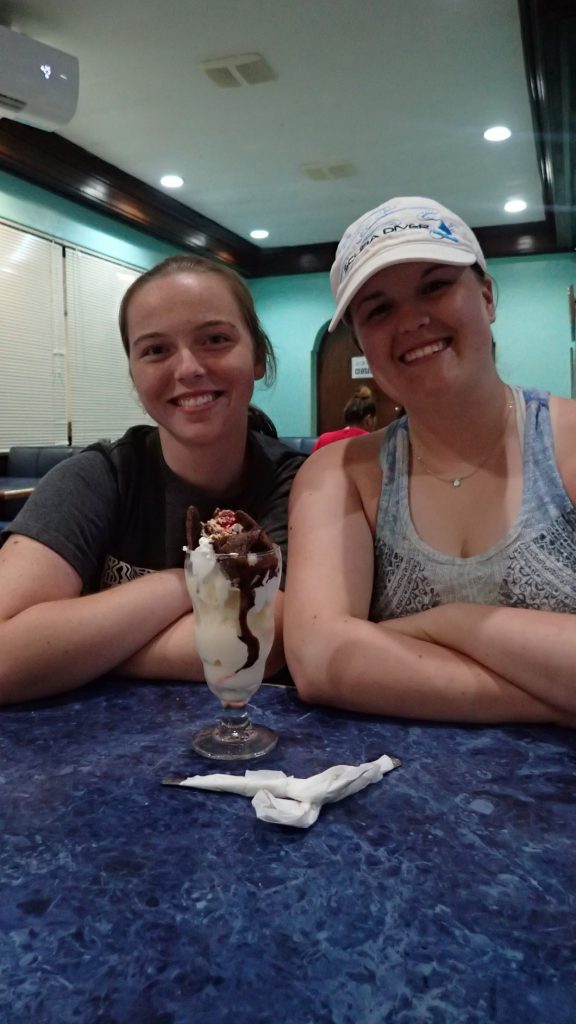
The last several days we have been learning about the traditional food systems of Palau. After breakfast, we began the day by preparing hand lines, which we will be using when we go bottom fishing tomorrow.

Next, we grabbed the paddle boards, kayaks, and snorkel gear to head out to the mangroves.

Aot talked about the many different benefits of the mangrove ecosystem. Mangroves are unique trees with many adaptations. To survive in the saltwater, individual mangrove trees use “sacrificial leaves”, which they divert salt from the ocean into, instead of dispersing the salt through the whole tree. Another strategy is the aerial root structures, which vary from species to species. The four types of root structures are buttress, knee, snorkel, and prop. Because of the complex root structure, mangroves protect the coastlines from wave erosion, typhoons, tsunamis, and catch sediments from terrestrial runoff. These ecosystems are also vital to the traditional subsistence practices of Palau. Women go out foraging at low tide for clams, fiddler crabs, and sea cucumbers. At high tide, when larger fish come near the shore to feed, men will spear fish for the larger species such as mangrove snappers, rabbitfish, and mangrove crab. These systems also function as a refuge for early growth of juvenile fish, which then disperse to support the reef fisheries. As estuarine systems, mangroves have high productivity and high biodiversity.

After the introduction by Brian, Scott, and Aot, we tied up our paddle boards and went snorkeling along the edge of the mangroves. Along the edge of the shore, we primarily saw snorkel roots, but saw more prop roots when we swam up inland channels. Further offshore, beyond the snorkel roots, there was patchy seagrass. Throughout the seagrass, there were mantis shrimp holes guarded by different species of shrimpgoby. This is a mutualistic relationship, where mantis shrimps will dig the holes, and the shrimpgoby guards the hole; the shrimpgoby gets a home, and the mantis shrimp is protected.

When we swam into the mangrove channel, it was much calmer than in the ocean along the shore. It was cool to experience firsthand how the mangroves keep the waters calm.
When we got back to Ebiil society from our excursion in the mangroves, the power was out so we had a few hours to catch up on journaling, relaxing, and lunch. We wrapped up lunch with a chemang (mangrove crab) that Noah caught!

Once the boats were fueled up, we piled on three boats and took a 20 minute ride out to Bngall, a traditional fishery which has been degraded by overfishing. The Bngall fishery is located just south of Ollei where we have been staying, near the island of Ngerkeklau.


The giant clam restoration area was marked by four white buoys, approximately a square kilometer in area. Because it was low tide, we were unable to boat all the way to the restoration area. We put on our snorkel gear and swam in about 2 feet of water for about a kilometer to meet with the smaller boat, which had the clams from the hatchery for outplanting.

Omar explained how to proceed with outplanting to increase the chances of clam survival. He said to plant close to a protective structure such as seagrass, a rock, or coral, so that wave action would not knock the clam over leaving it to die. However, he also said not to put the clams too close to coral or rock, to make sure the clam had room to open and to grow. We planted 55 clams in Bngall!

We returned to Ebiil society, where the power was still out and dinner was going in the smoker. We had another amazing meal with tapioca, chicken, fresh caught fish, and the taro which we harvested yesterday.
Most evenings we gather for discussion and reflection on the activities of the day, and talk about all that we are learning. Tonight, welcomed Ann (executive director of Ebiil society) home to Ollei, and had the chance to hear about how she saw the need for cultural resurgence and natural conservation, and how she acted on that.

The earliest project of the Ebiil society was establishing protections for the Ebiil channel. Ann also told us the story of how the sea cucumbers outside of Ollei were overfished. Traditionally a women’s fishery, the sea cucumbers were targeted by the men in the community who had boats for export to China. The fishery was stressed to the point where the lack of sea cucumbers began to effect other organisms in the system, with meas (rabbitfish) being the next thing to disappear from the waters. The desolation of the system impacted the women in the community the most. Once the community understood the damage to the fishery, it was time for action. The mechas (women elders) knew the spawning cycle of the sea cucumbers, which was instrumental to the success of restoring populations. Ann attributes the success of Ebiil to the community engagement and country leadership involvement. Without Ann’s leadership in the early days and continuing behind-the-scenes contributions, Ebiil society would not be where it is today.














